Types of purple flowers: Here are 20 plants with purple flowers (name and pictures):
Lavender
Aromatherapists use Lavender in aromatherapy. It is believed that the fragrance from the oils of the lavender plant promotes calmness and wellness.
Other uses of Lavender include flavoring foods and beverages and as a fragrance ingredient in soaps and cosmetics.
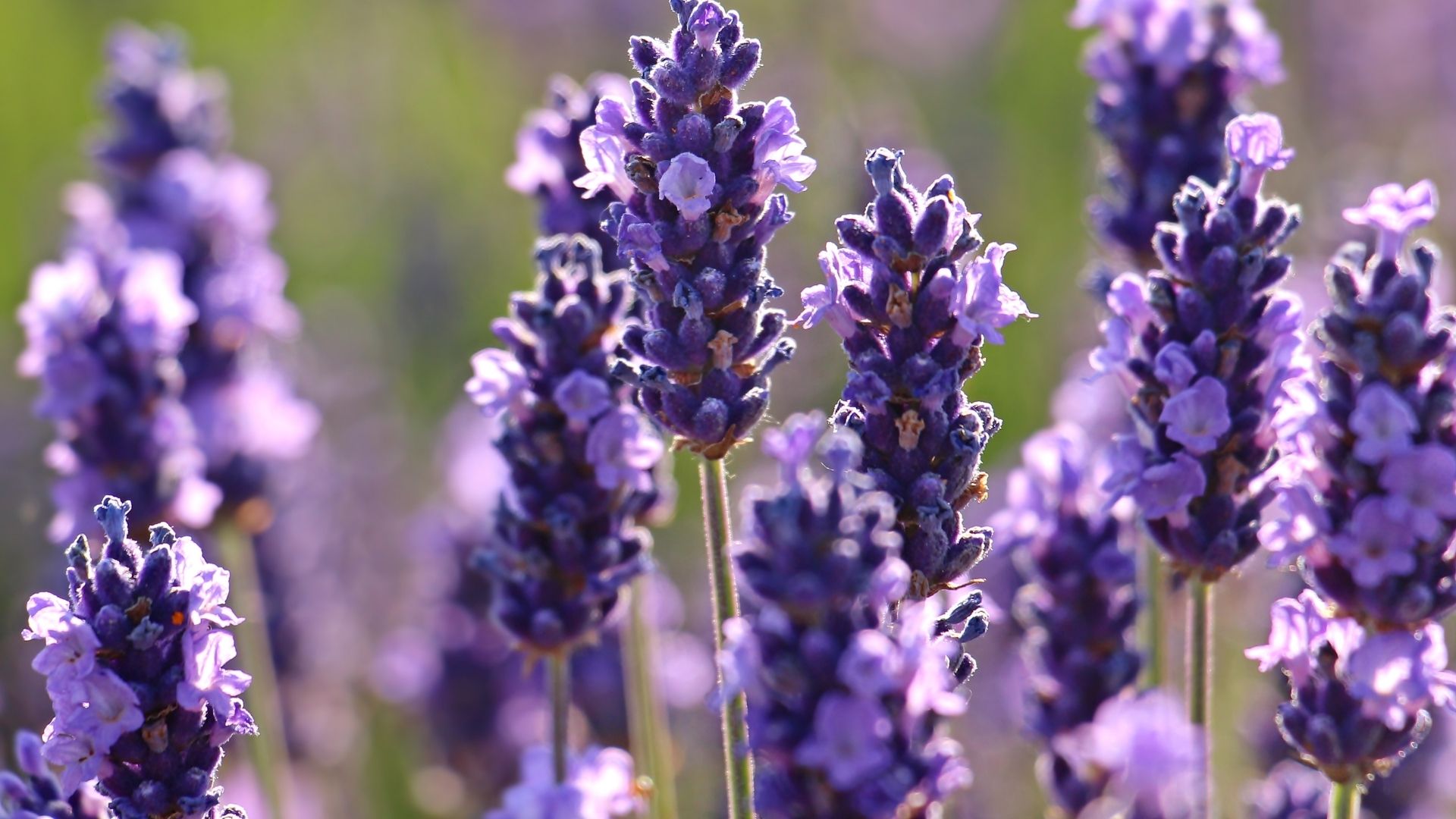
Purple Wisteria Flowers
Wisteria is a flowering plant in the legume family, Fabaceae (Leguminosae).
It is a climbing vine, that produces blue and purple flowers during the spring and summer months.
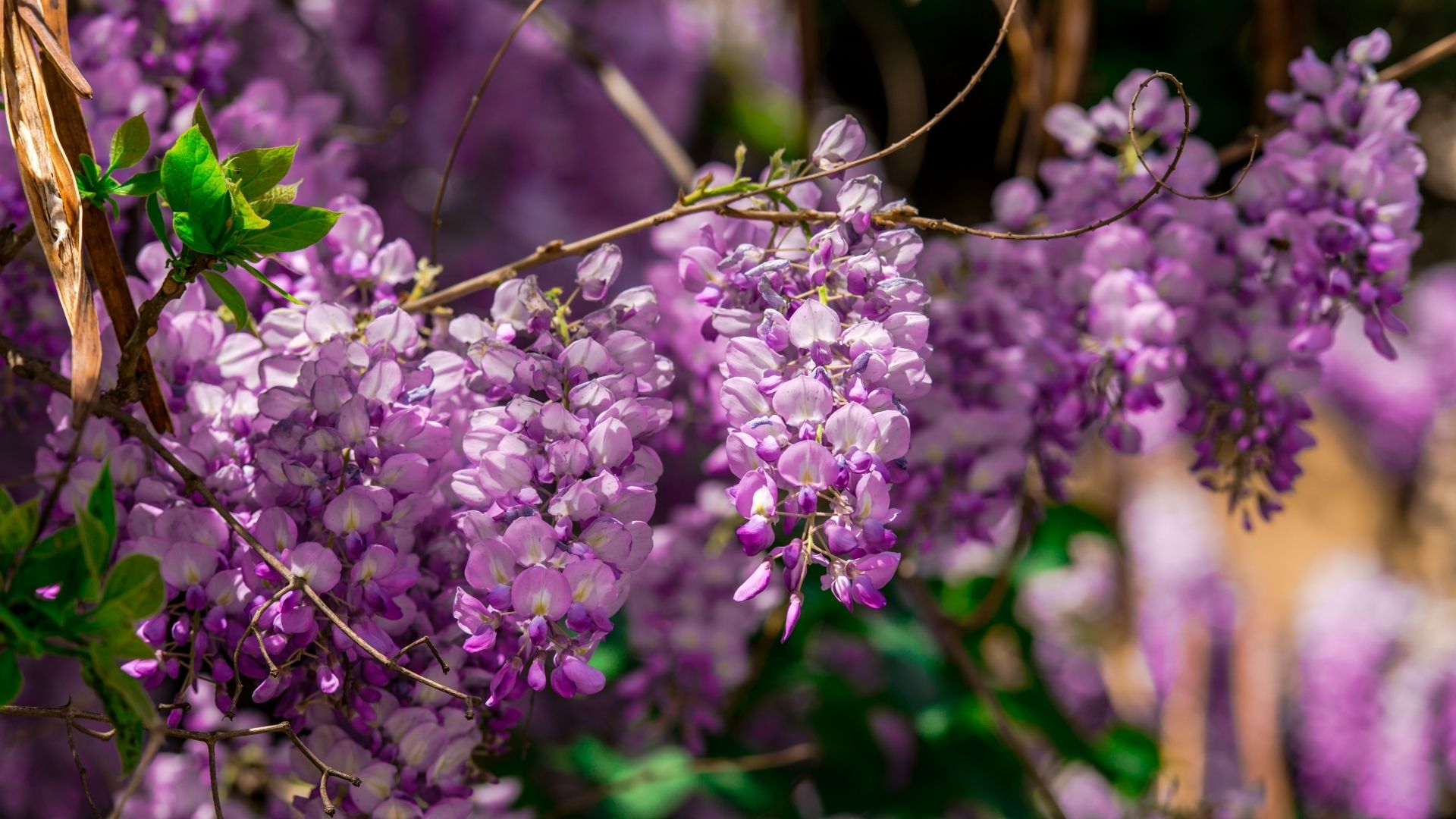
Vervain
Vervain (Verbena officinalis) is a flowering plant, native to the United States.
It grows naturally on roadsides and within grassy fields.
You can expect Vervain to flower between June and September.
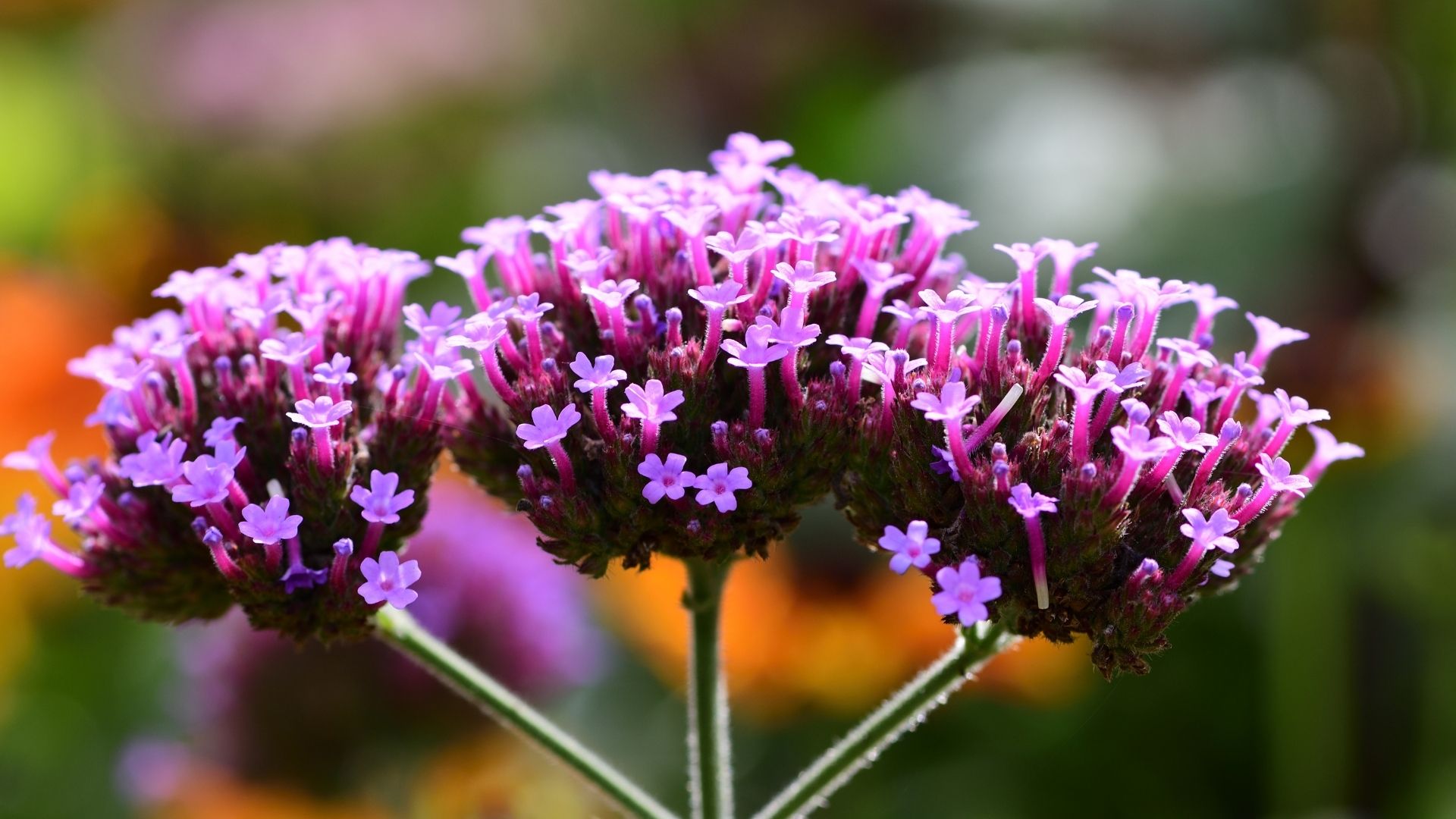
Purple Pansy Flowers
The garden pansy is a hybrid plant that is often cultivated as a garden flower.
Pansies are often the first annuals to bloom and do so in early spring.
These flowers do particularly well in sunny or partially sunny positions and well-draining soils.
It is a perennial but can also be grown as a biennial or an annual due to its leggy growth.
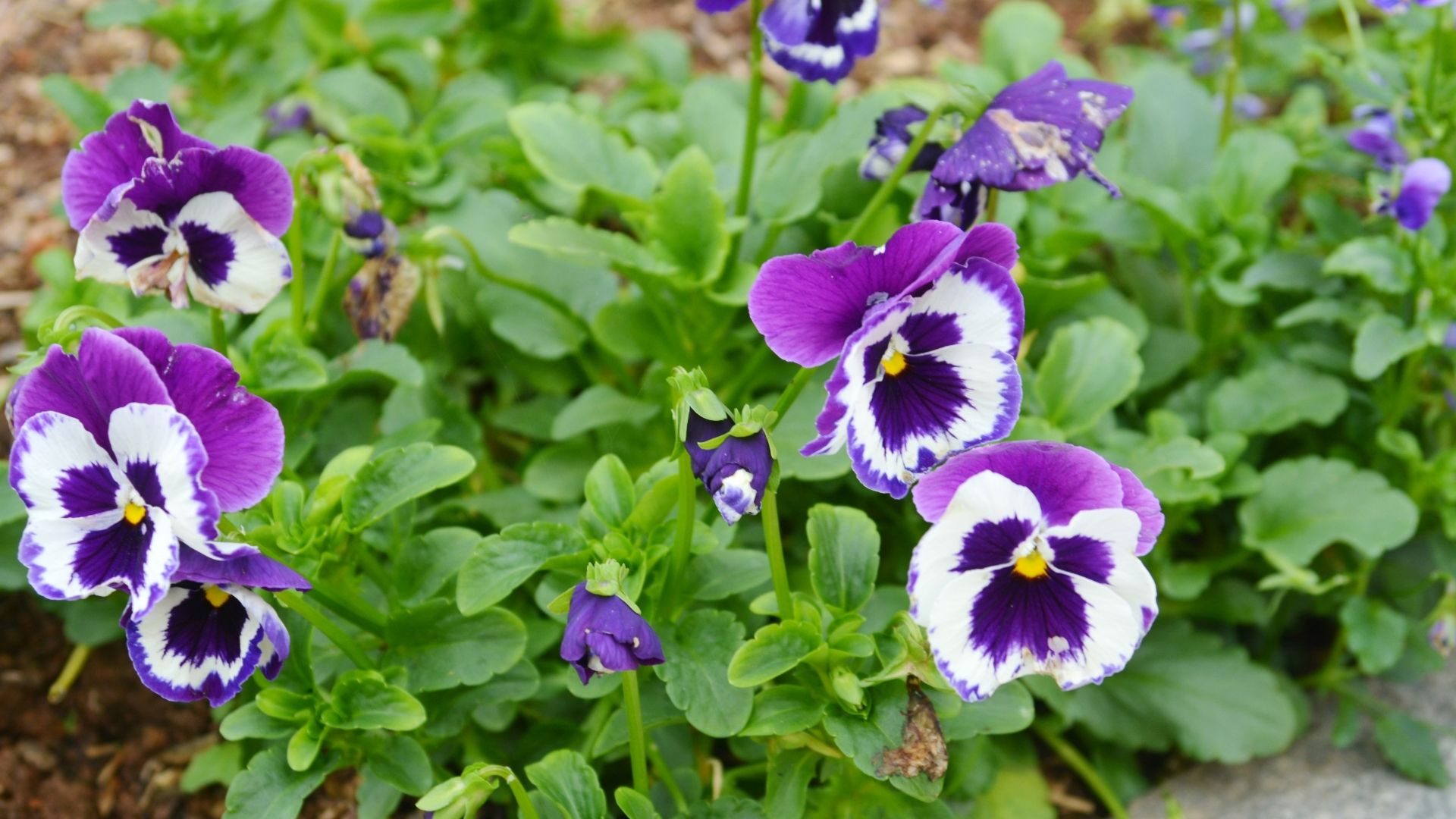
Leather Flower (Clematis)
The standard clematis flower form is a large blossom that possesses six or seven petals, which generally measure 5-6″ in width.
Clematis vines do best in sunny locations (they require six hours of sun at a minimum in order to bloom). However, they also need to be kept in cool soils.
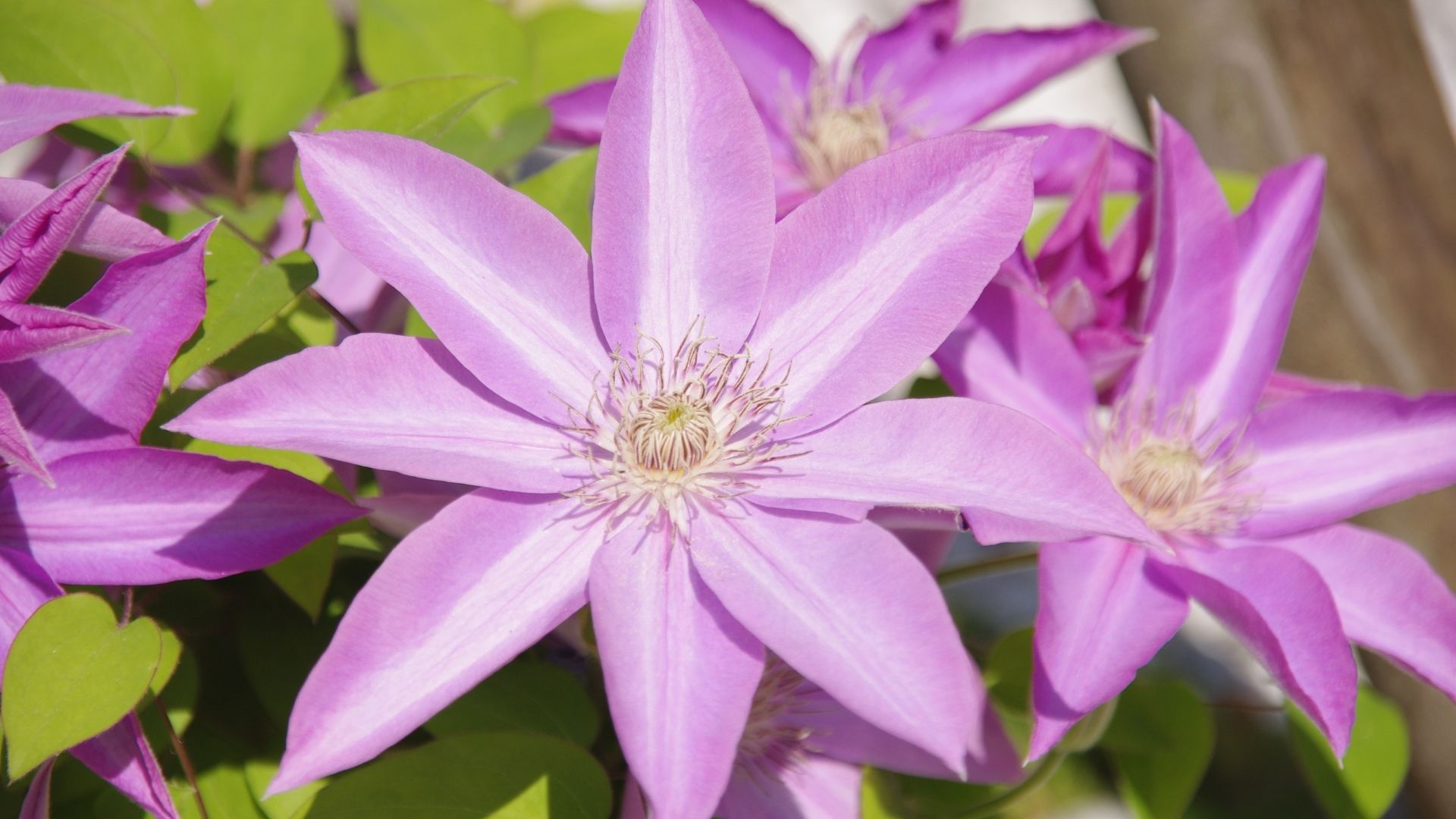
Lilac
Lilac is simple to grow, hardy, and resistant to most common pests. They also produce wonderfully fragrant scented flowers, most commonly during the spring.
As such, they are a favorite flowering shrub across Europe, Asia, and North America.
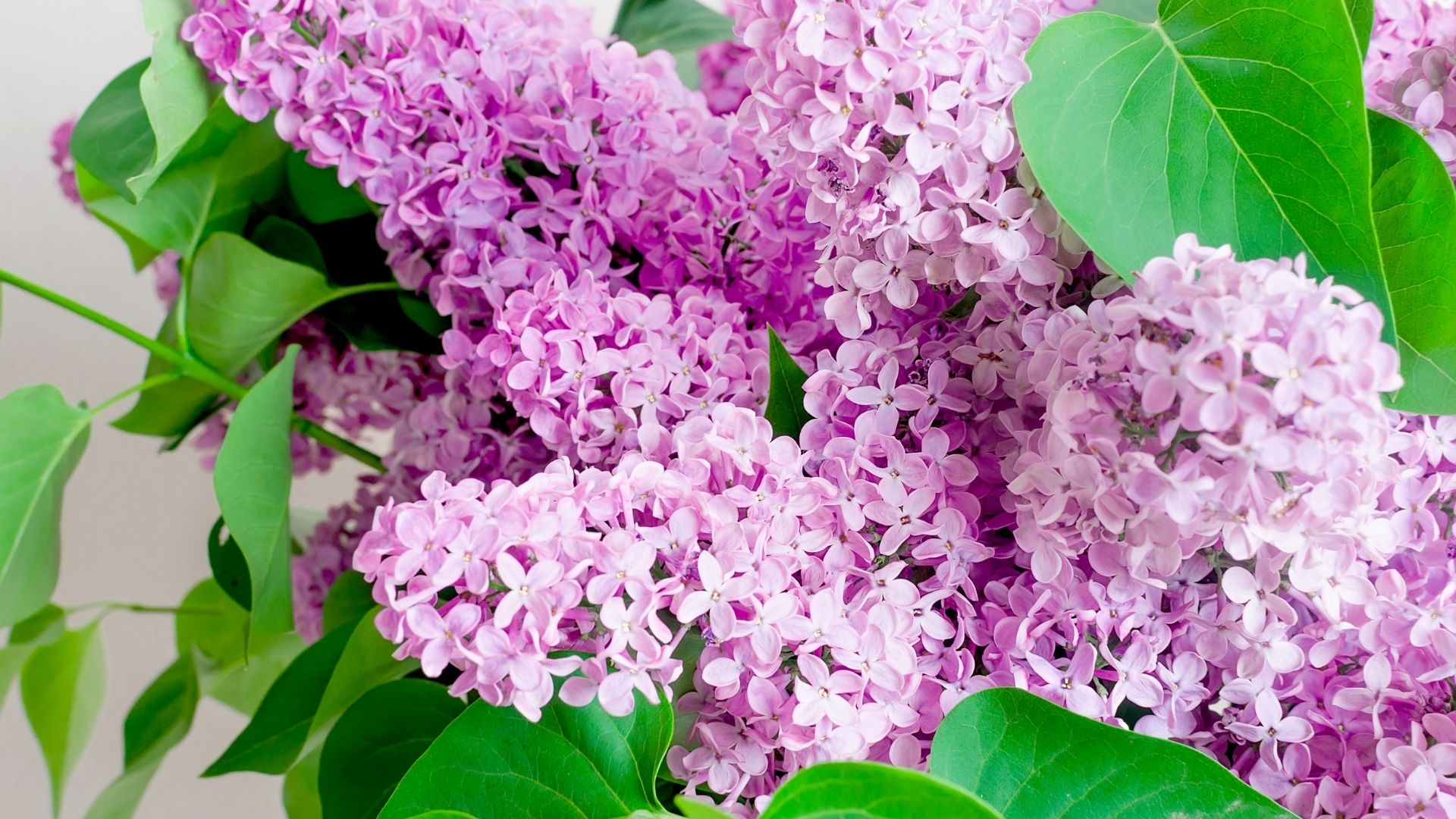
Irises
Plant irises produce impressive flowers in a range of colors, most commonly purple.
They grow best during the late summer to early fall months when nighttime temperatures are stable at around 40-50 degrees Fahrenheit, or slightly above.
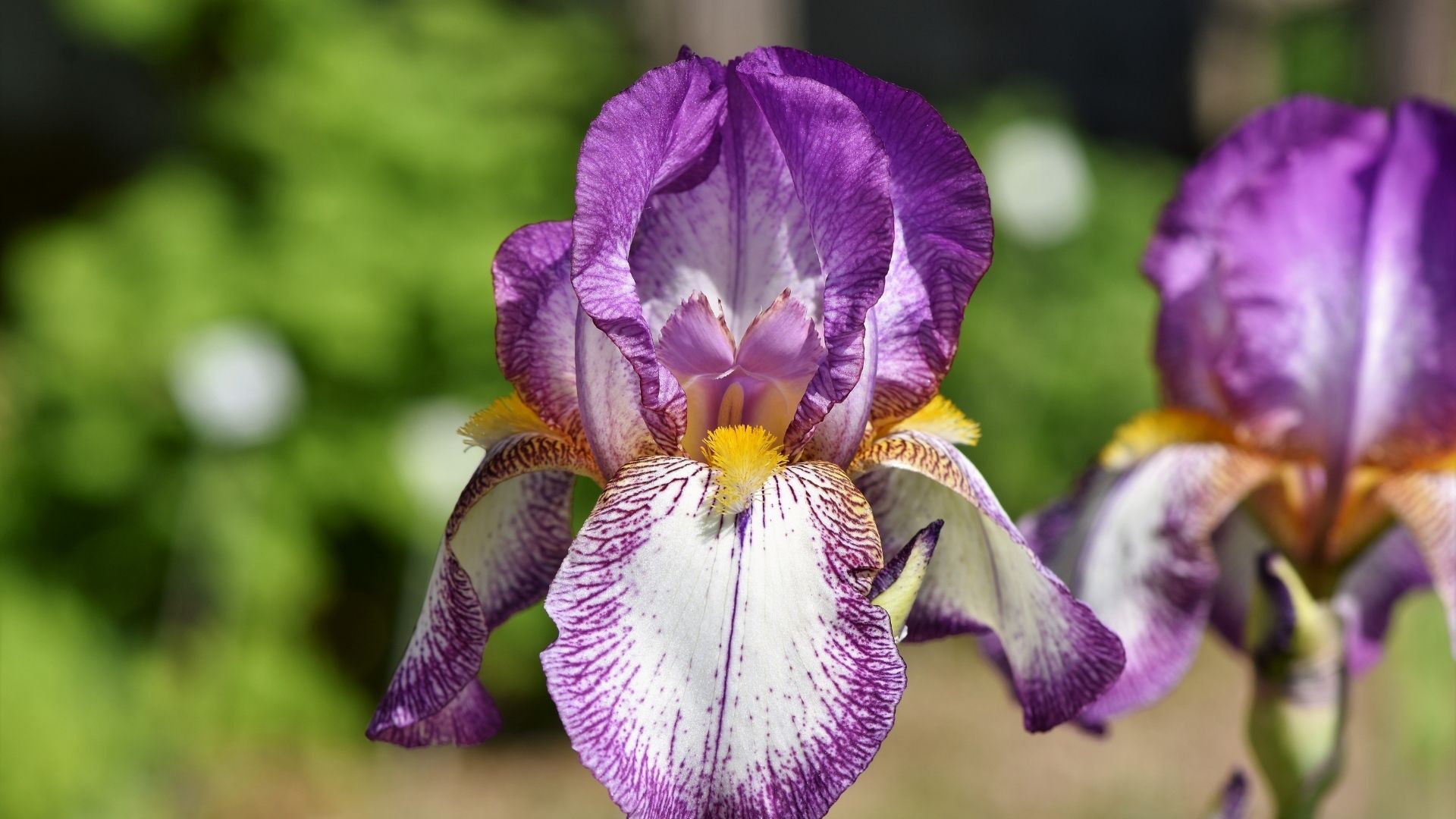
Crocus
Crocus is a flowering plant in the iris family, which also includes 90 different species of perennials. All of which grow from corms.
Crocuses can be found in a variety of colors; from blues, yellows, pinks, reds, oranges, and more).
Snow crocuses are the first to bloom, and as the name suggests, giant Dutch crocuses are the largest standing at between 2-4″ in height.
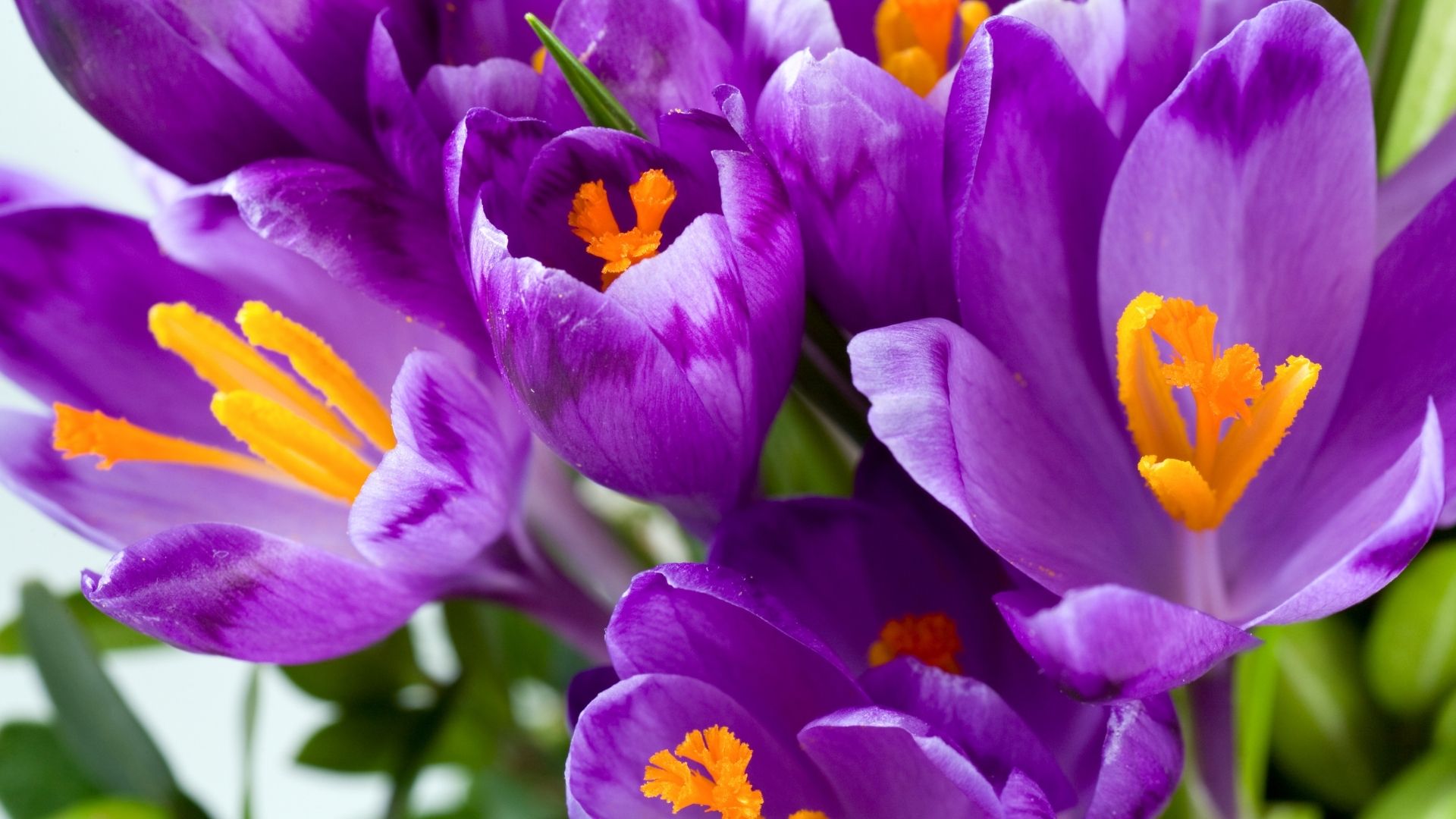
Lupine
Lupine flowers blossom during the late spring and early summer.
They feature impressive, erect spikes of closely packed, delicately scented, blue and white flowers.
Nevertheless, there are also a variety of Lupines that will bloom white and purple flowers too.
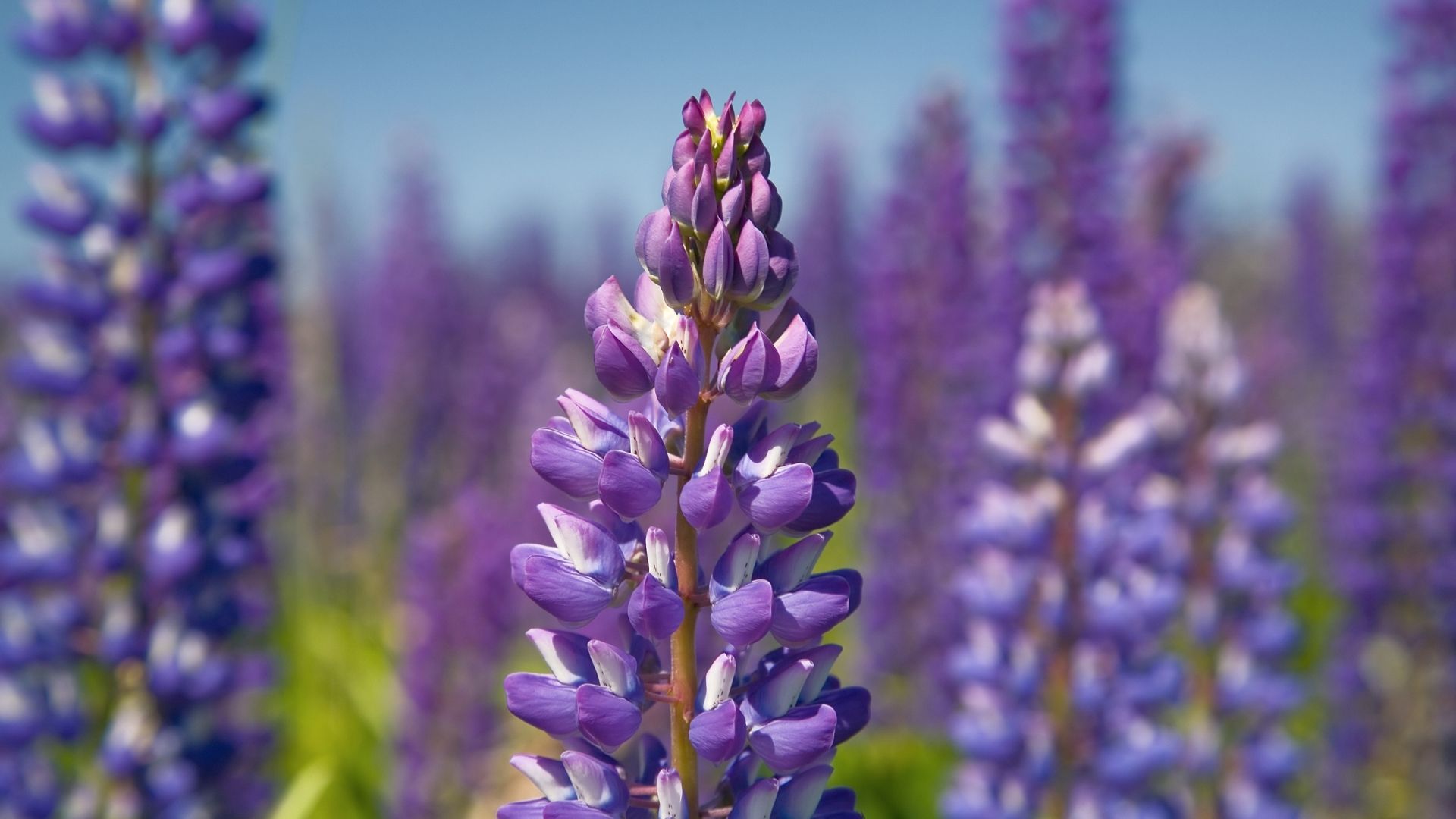
Hyacinth
Hyacinthus (Hyacinths) is a small genus of bulbous.
They are spring-blooming perennials and come in a variety of colors – ranging from purple to pink to blue.
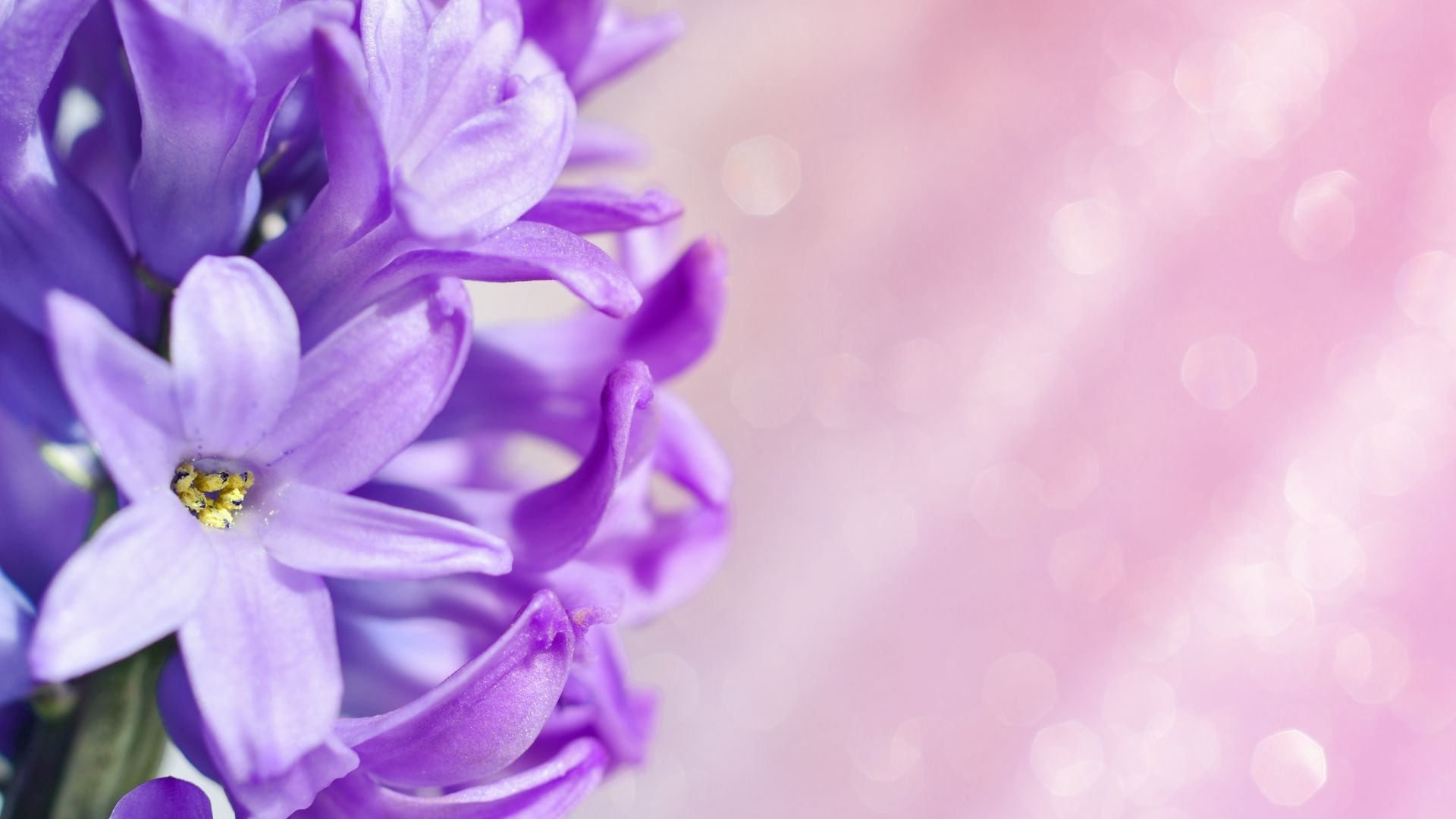
Gladiolus
Gladiolus is a purple perennial flower that possesses tall spikes and large, colorful flowers.
These popular blooming plants are known as “glads” and have various hues, growing to between 2 and 5 feet in height.
They are a great cutting flower and look particularly great during the summer.
Gladiolus simply looks amazing in summer bouquets.
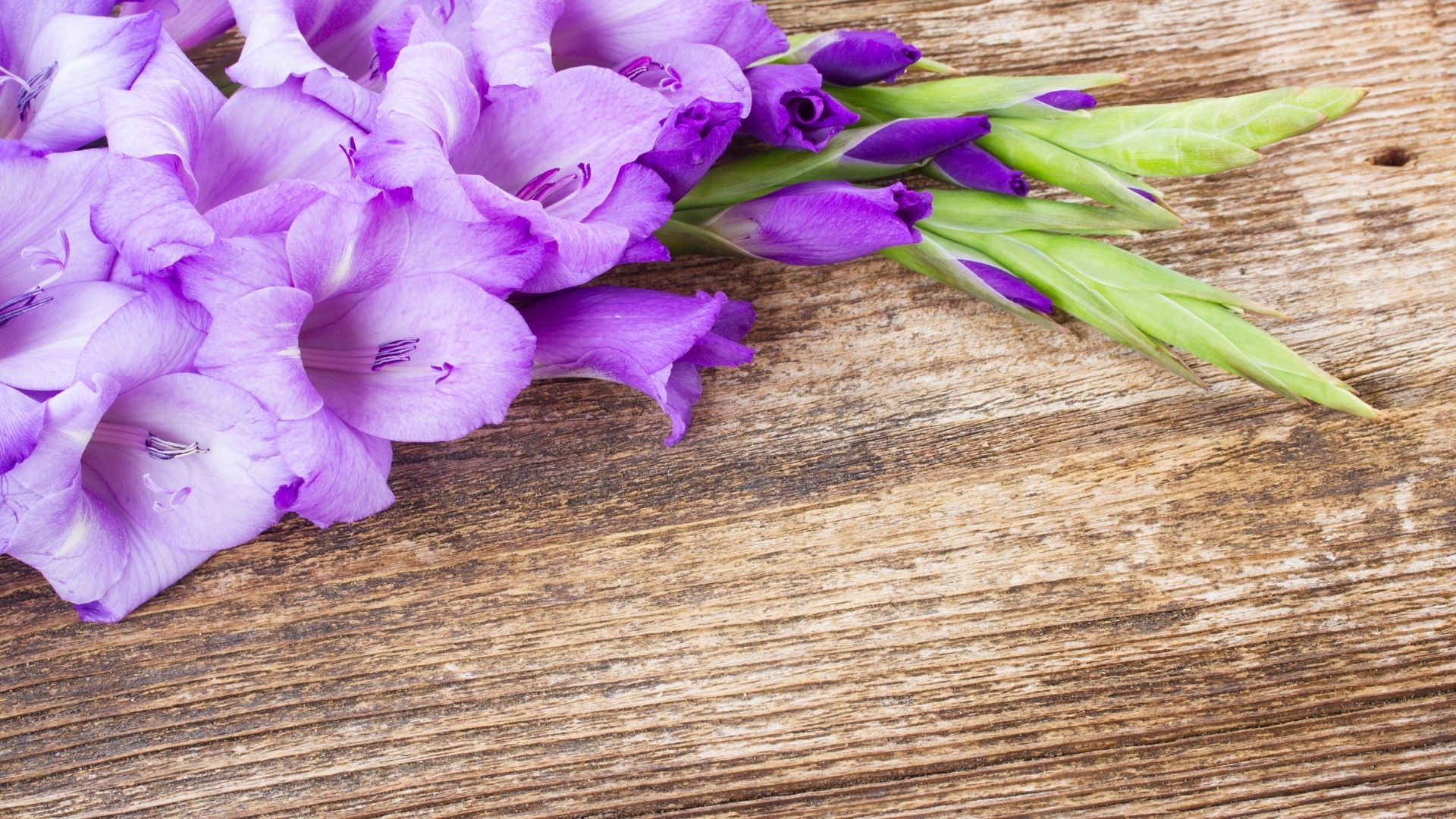
Anemone
Anemones, or windflowers, are fragile-looking but quite solid.
These beautiful plants come in a variety of bloom types, including early-blooming bulbs and late-flowering perennials.
All have open, cup-shaped blooms with the exception of one or two that may be double or daisy-like with many petals.
They can be grown in borders, around trees and shrubs, or in containers. They blossom during the spring and the fall.
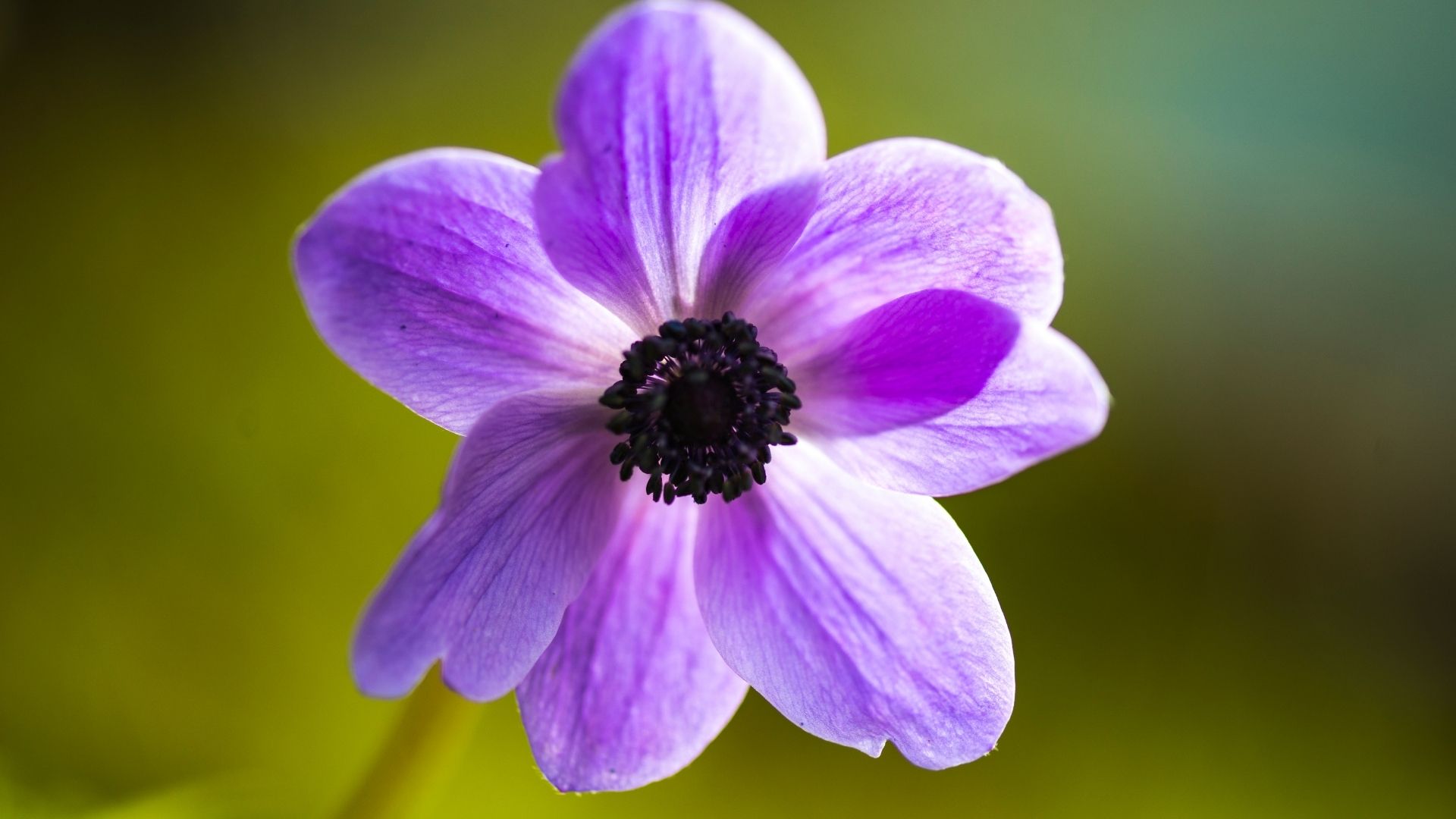
Calla Lily (Zantedeschia)
Zantedeschia (Calla Lily) is a stunning plant, where the best is seen in the summer.
They are most commonly used as borders, in containers, or even as cut flowers.
Either way, they provide a stunning effect with their bold, bright colors and trumpet-shaped flowers

Larkspur (Delphiniums)
Larkspur flowers (Delphiniums) are perennials that are grown for their impressive array of flowers. They provide impressive early-season color.
You will most certainly plant larkspurs in your garden year after year if you learn how to cultivate them.
Larkspur flower care is simple and straightforward once they’ve taken root.
You can find them in shades of blue, pink, white, and purple.
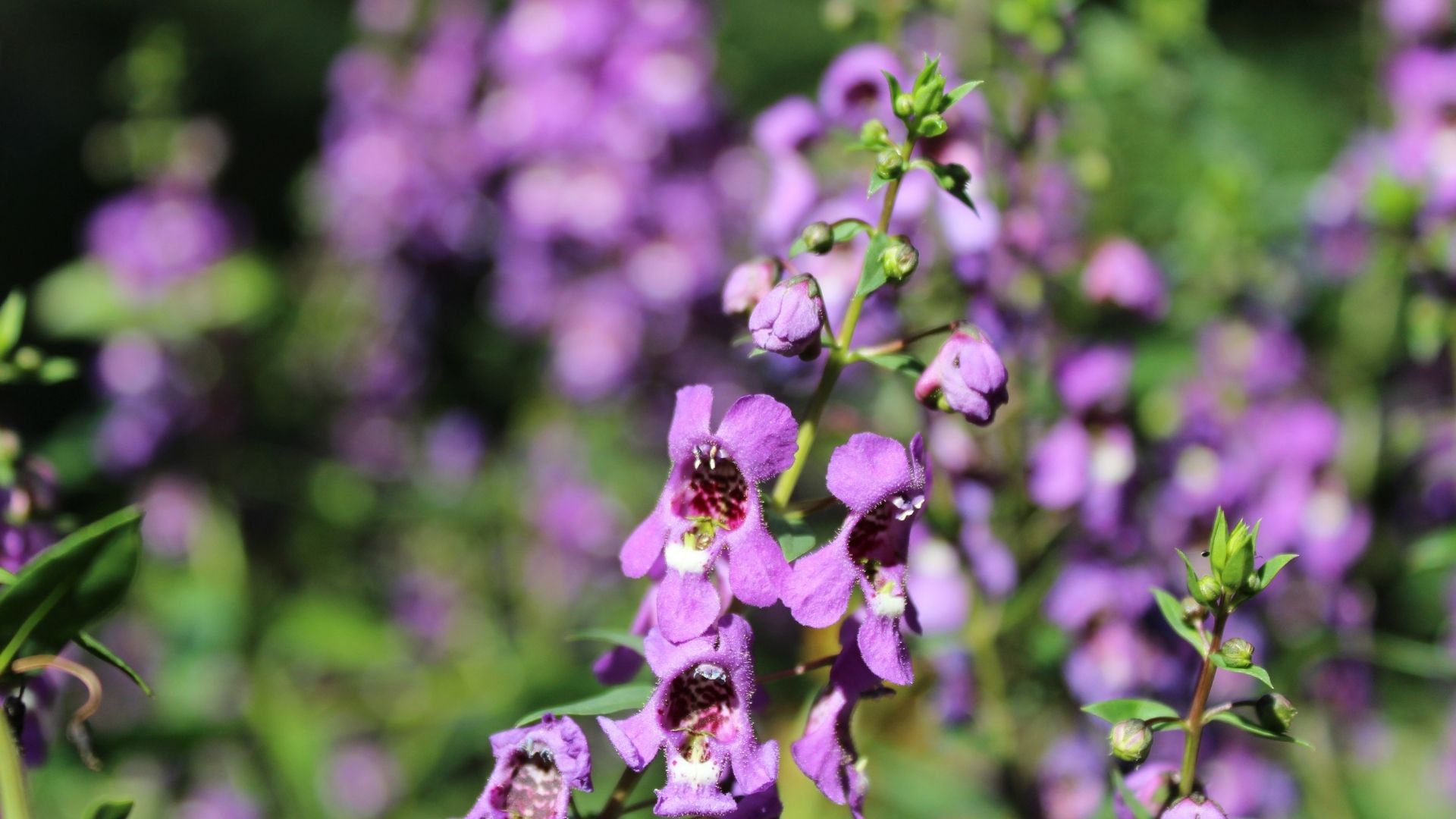
Heliotropium
Heliotropium arborescens (Heliotrope) is a delicate perennial shrub when it grows natively but often does well as bedding annuals.
It possesses nectar-rich flowers and pollen – so it will attract bees, butterflies , and moths.
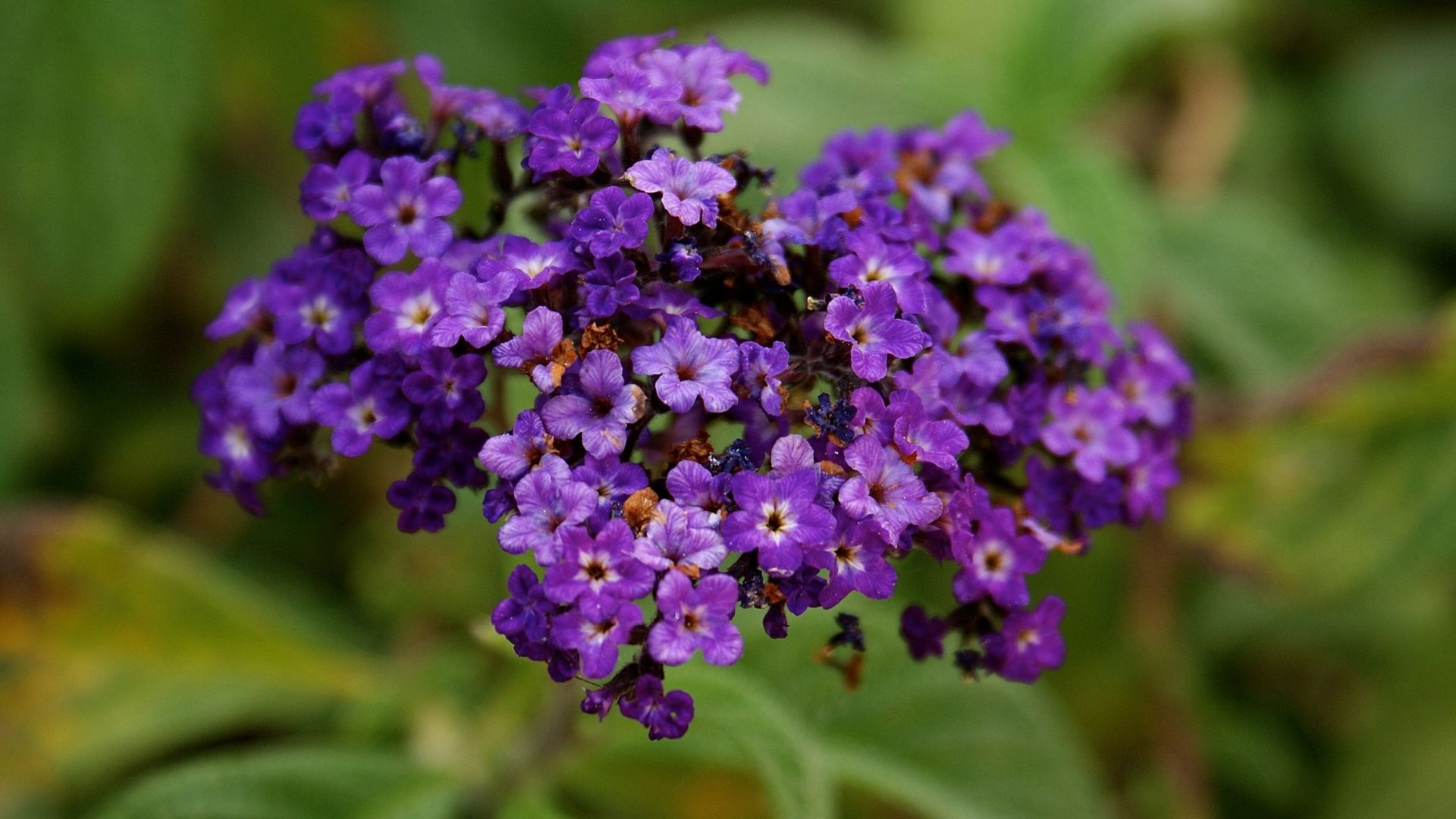
Catnips (Nepeta)
Catmint (Nepeta) is a free-flowering, low-maintenance plant.
Catnips are attractive; their foliage has flower spikes in different shades – be it white, blue, purple, or yellow.
Many gardeners use purple-blue varieties as a substitute for lavender plants because lavender is not so hardy.
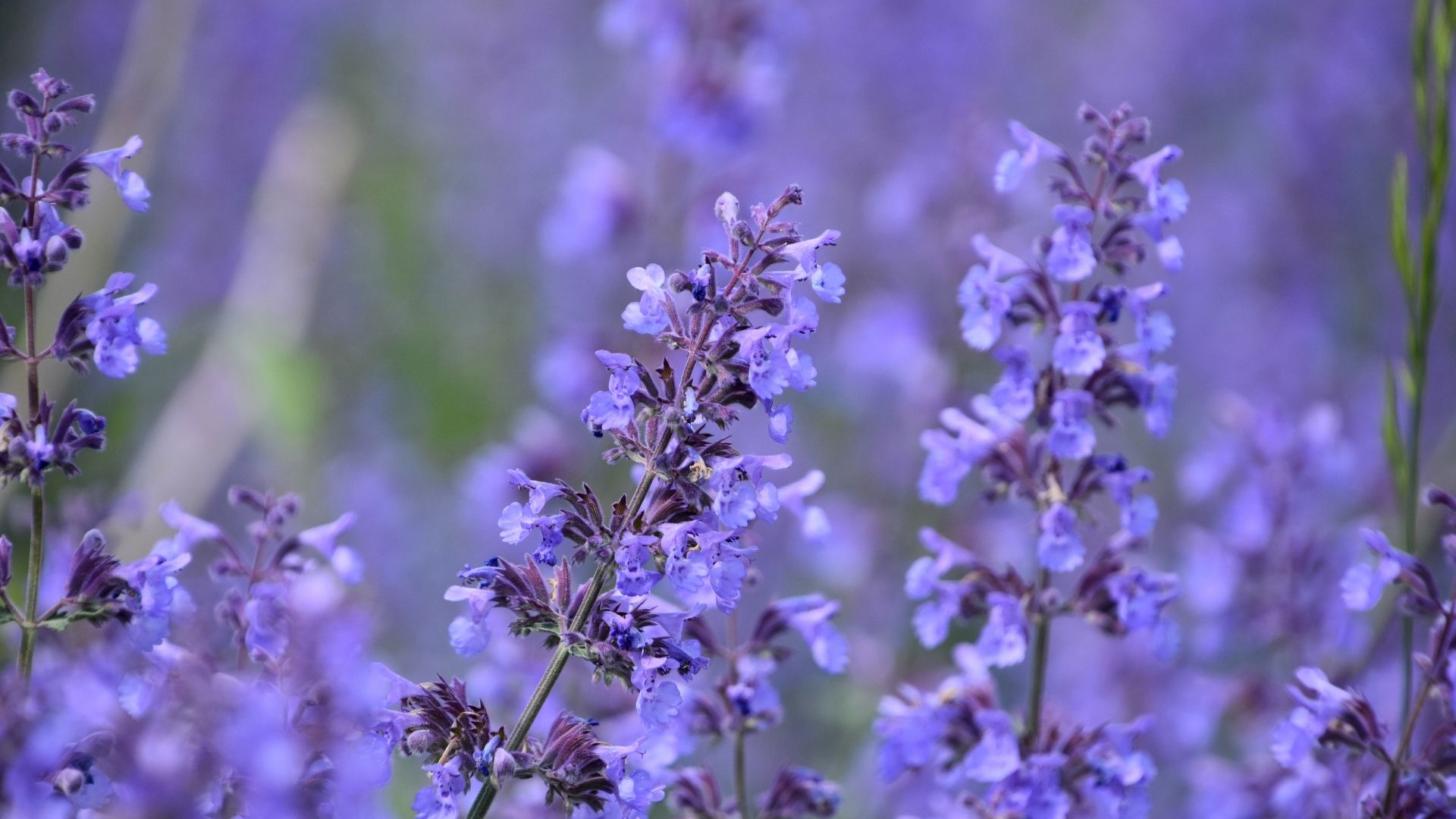
Zinnia
Zinnia blooms are one of the simplest annuals to produce, and they come in a wide range of colors.
The display runs from late spring until the first frost in autumn.
The cheerful flowers that blossom in nearly every color imaginable attract butterflies and hummingbirds.
They develop quickly and consistently, making them an excellent choice for inexperienced flower growers
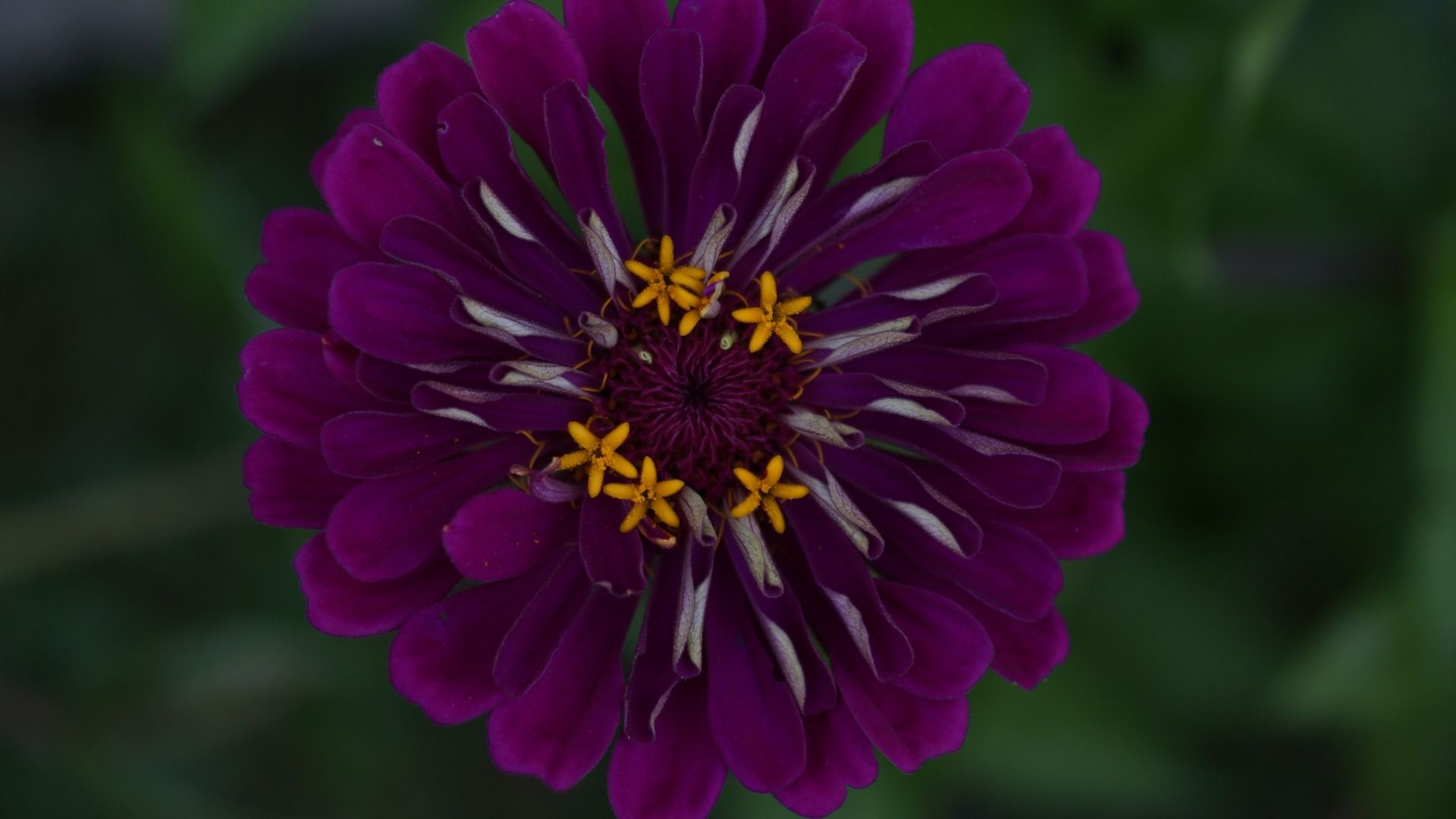
Ophrys Apifera
Ophrys apifera, which also goes by the name bee orchid in Europe, is a perennial herbaceous plant.
It has multiple small flowers, all of which have three large, pink, petal-like outer tepals, a large labellum that looks like a bumblebee, and two other inner tepals that look like antennae.
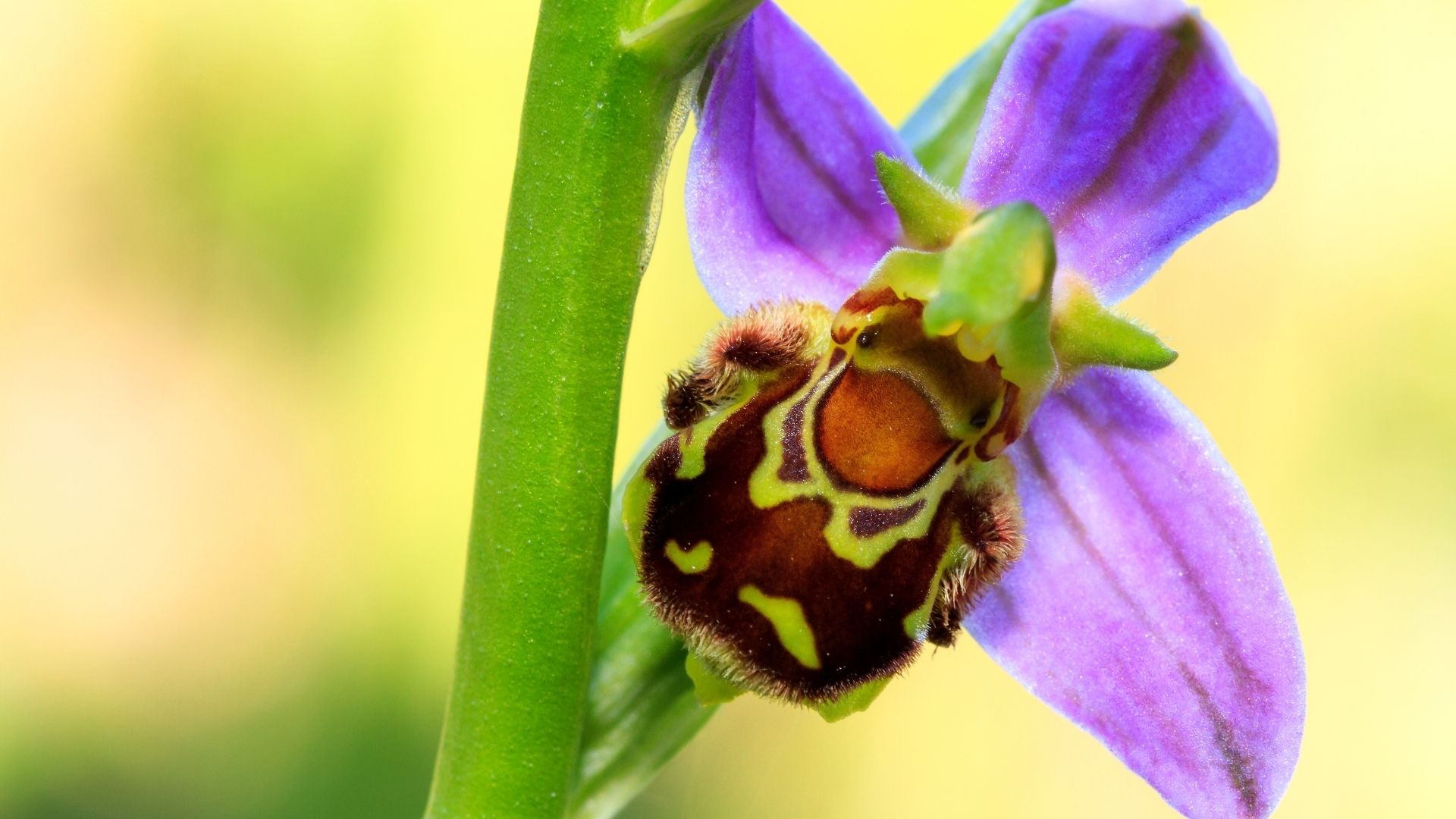
Callistephus
Callistephus is a stunning annual plant and one of the most enticing summer flowers, as large as 3-5″.
It has bold bright colors and abundant blooms – all over a long season that starts in the summer and extends all the way through fall.
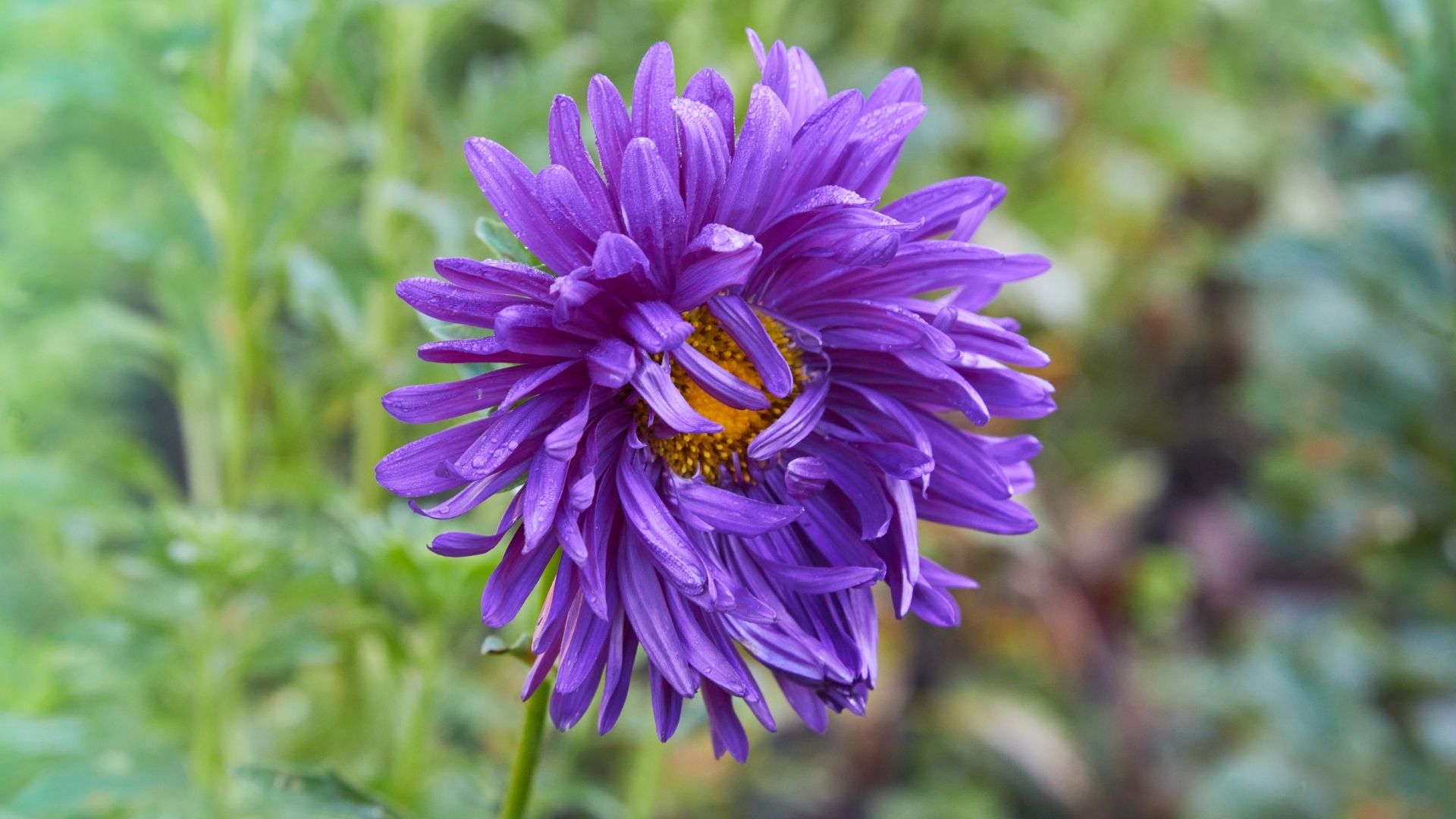
Coneflower (Echinacea)
Echinacea (Coneflower) is often used as a herbal remedy, effective at both preventing or treating the common cold.
Coneflowers only grow in eastern and central North America, where they require moist to dry prairies and open wooded areas to thrive.
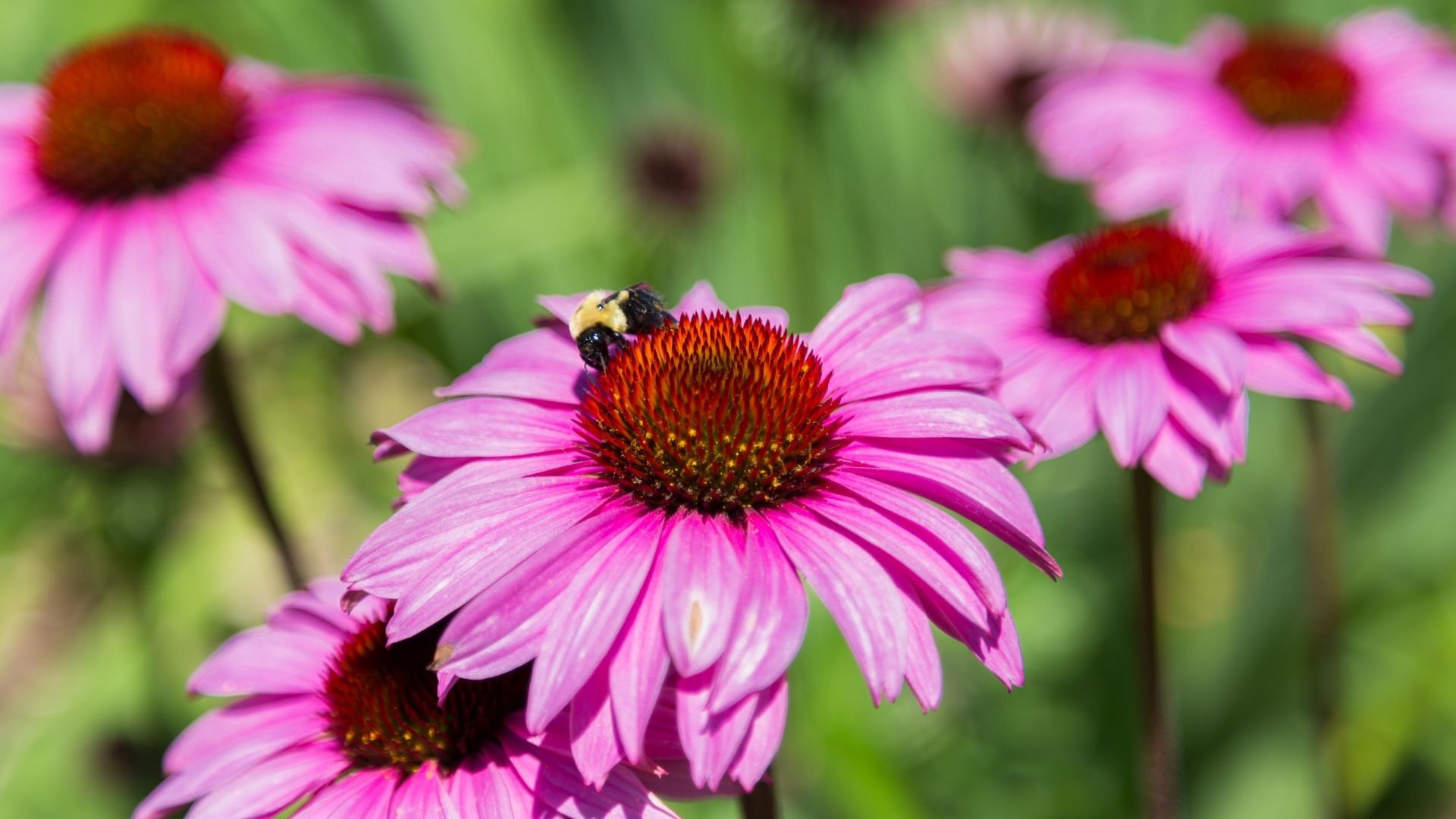
Cyclamen
Cyclamen is a small flowering plant that has sweet-scented, small (1/2- to 3/4-inch) blooms that grow on long stems that stretch up above the foliage.
It is a tuberous perennial, so it will die into thick roots (tubers) during its summer dormancy period. It will regrow and blossom every fall and typically transition quickly.
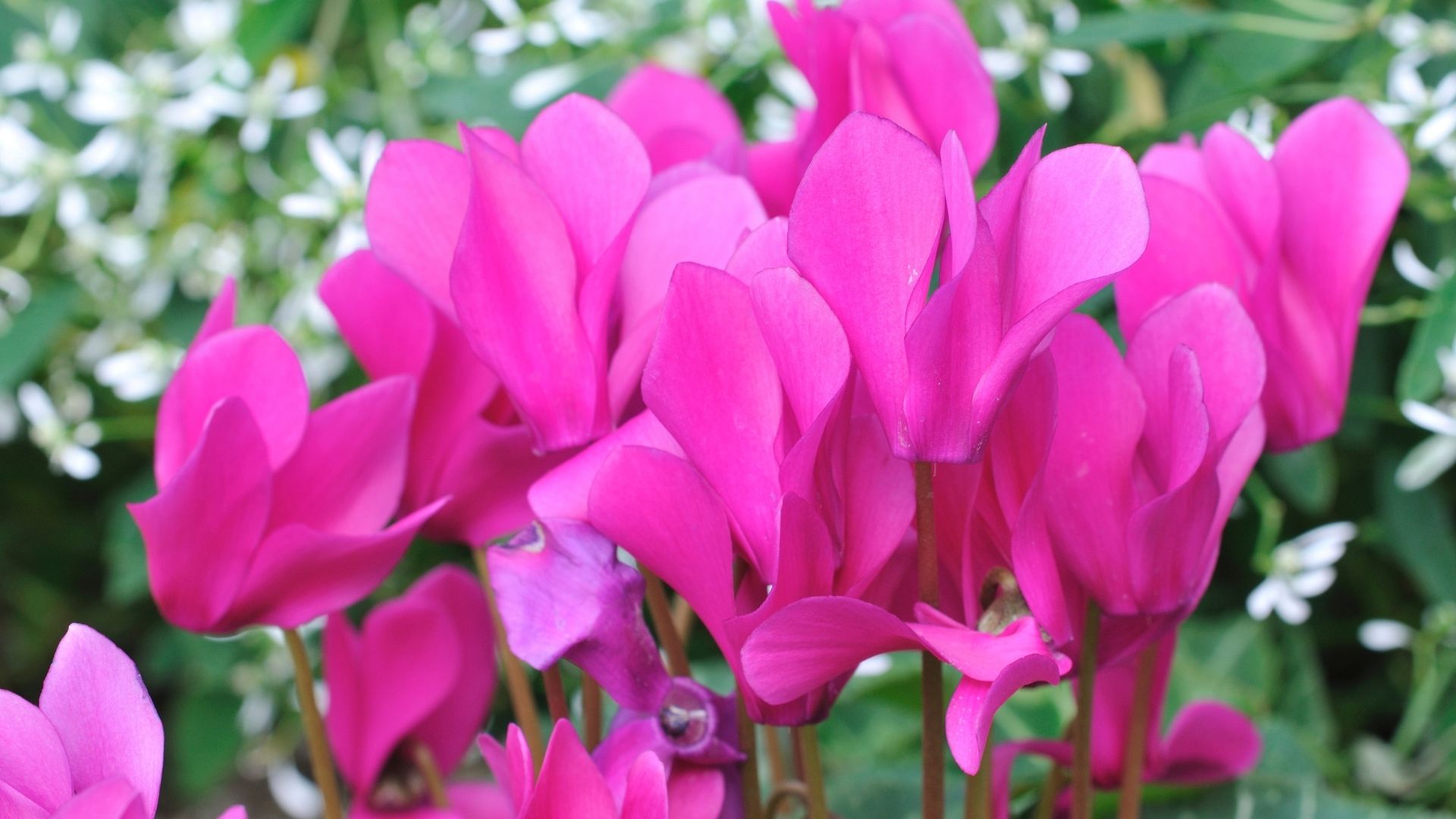
Columbine (Aquilegia)
Columbia flowers, also known scientifically as Aquilegia or more informally Granny’s Bonnet, are bell-shaped flowers that come in a variety of colors.
Most commonly you will see them in light pastels, bright reds, yellows, oranges, and purples but sometimes they are also bi-colored.
They are a fantastic garden perennial and widely loved by gardeners.
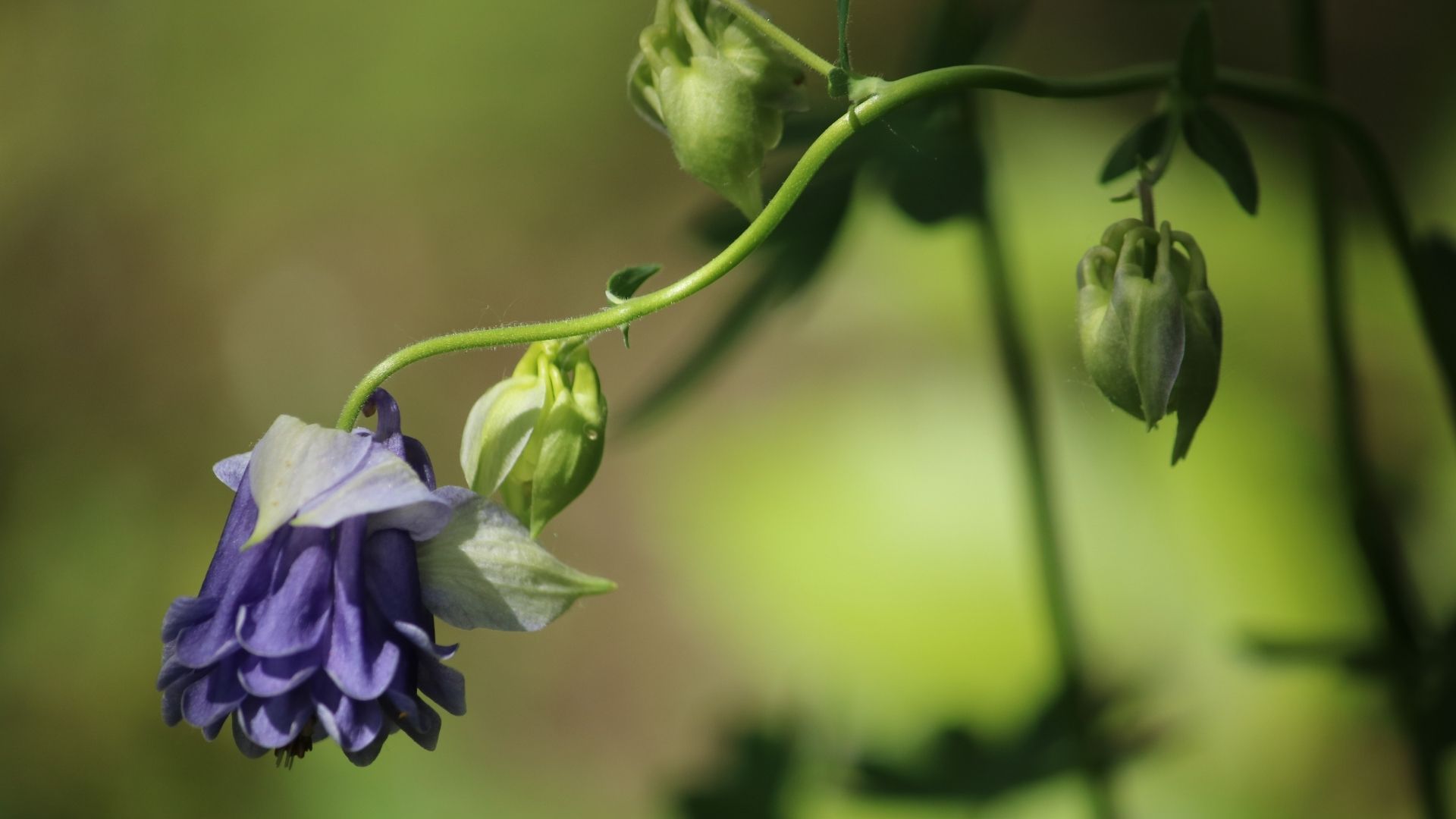
Garden Cosmos (Cosmos bipinnatus)
Cosmos bipinnatus, also known as the garden cosmos or Mexican aster, is a medium-sized flowering herbaceous annual plant that’s highly desired and easy to care for.
It is late-blooming, and will generally grow to 2-4′ in height.
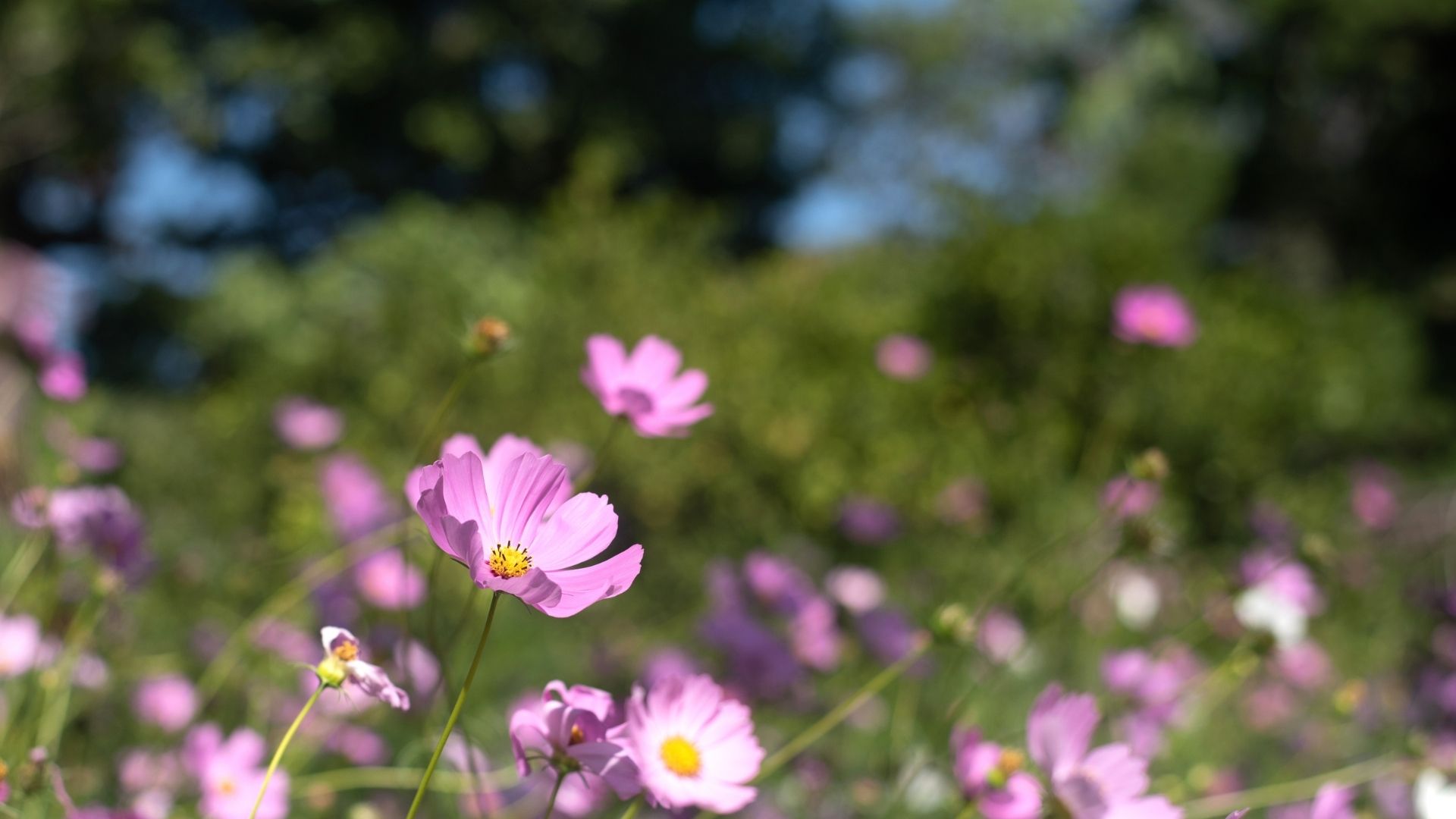
Evergreen Candiluft (Iberis sempervirens)
Iberis sempervirens, otherwise known as candytuft, is a low-growing herbaceous perennial.
They are commonly used as pathway edging.
They are known for being late bloomers and slow growers, showing their flowers as in April or May. It is ideal to plant them during the early fall.
When they do come out, the blooms are decorative and showy.

Prairie Gentian (Eustoma)
Eustoma (Prairie Gentian) is a biennial plant when it grows in the wild.
In a garden, it is most commonly kept and grown as an annual plant.
A perennial eustoma is only possible as a potted plant.
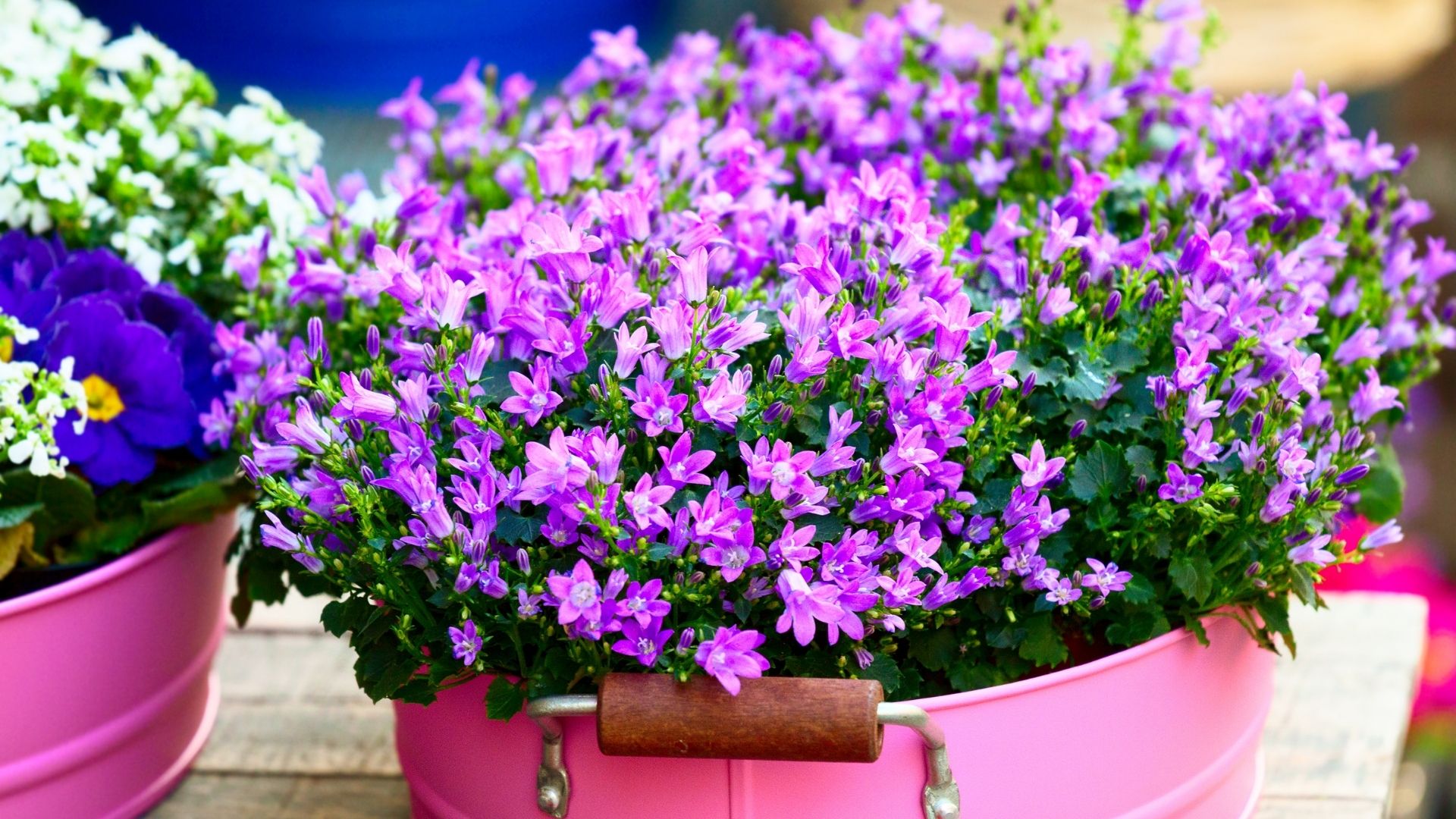
Eryngos (Eryngium)
E Eryngium (Sea Holly plants) is a sturdy erect perennial with branched stems and a combination of rounded basal, and upper spiny leaves.
These are attractive ornamental perennials that are grown for their impressive blue-tinted flower heads, which show in the summer and early fall.
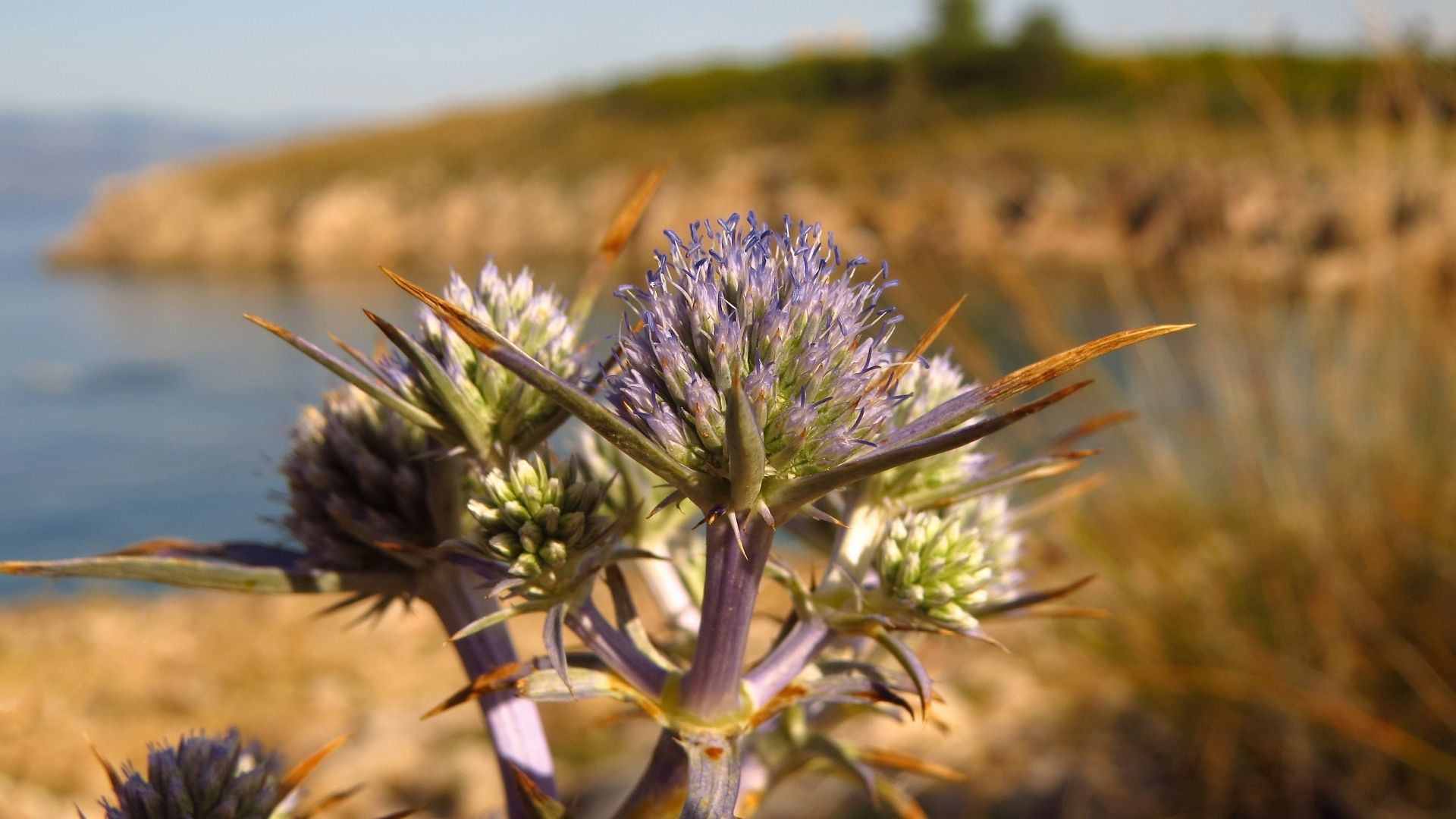
Rhododendron
Rhododendrons are popular garden shrubs prized for their beautiful blooms, which are generally seen in the spring.
Some have young leaves and stems covered in a thick woolly covering (indumentum) while others, known as deciduous rhododendrons or azaleas, produce bright color in the fall.
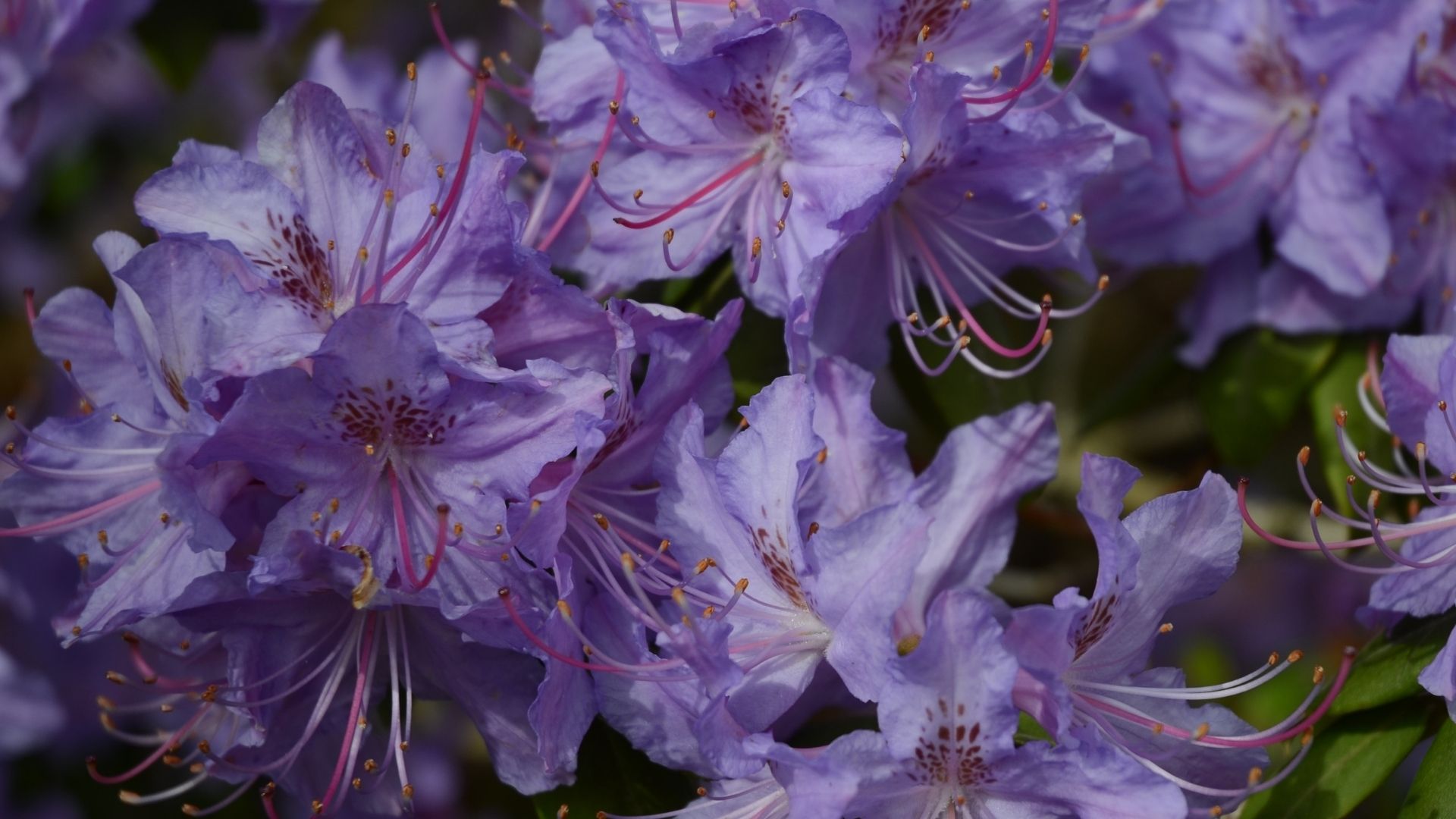
Ipomoea
Ipomoea is an exotic climber for the garden.
Ipomoea purpurea (Common Morning Glory) is an especially pretty annual vine notorious for its bold heart-shaped flowers.
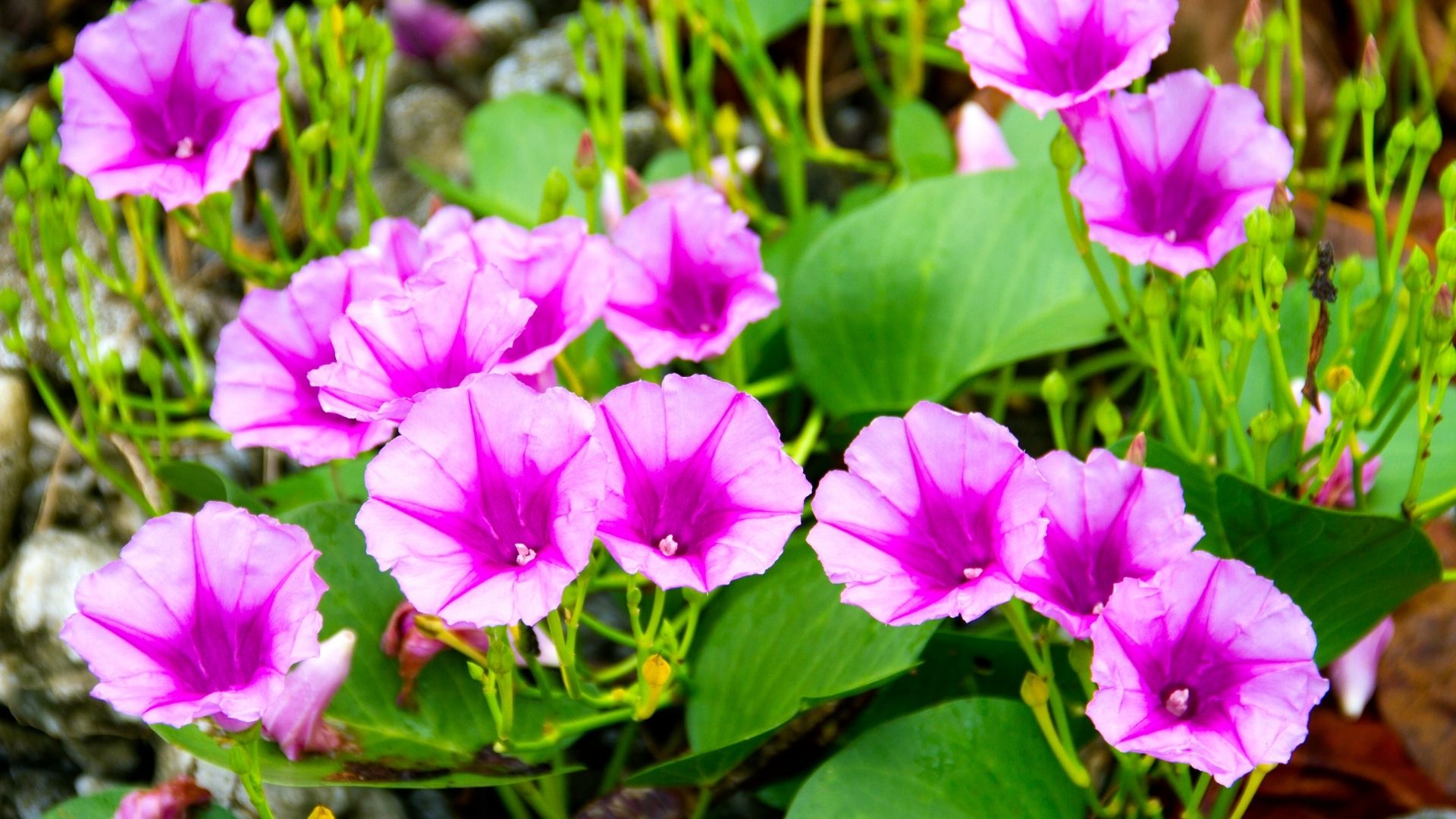
Canterbury Bells
Canterbury bells plant (Campanula medium) is a popular biennial and perennial garden plant.
It tends to stand at about 2-3 feet in height.
Large clusters of bell-shaped blooms will cover the stems.
The flowers are typically a mix of soft pink, blue, white, or purple.
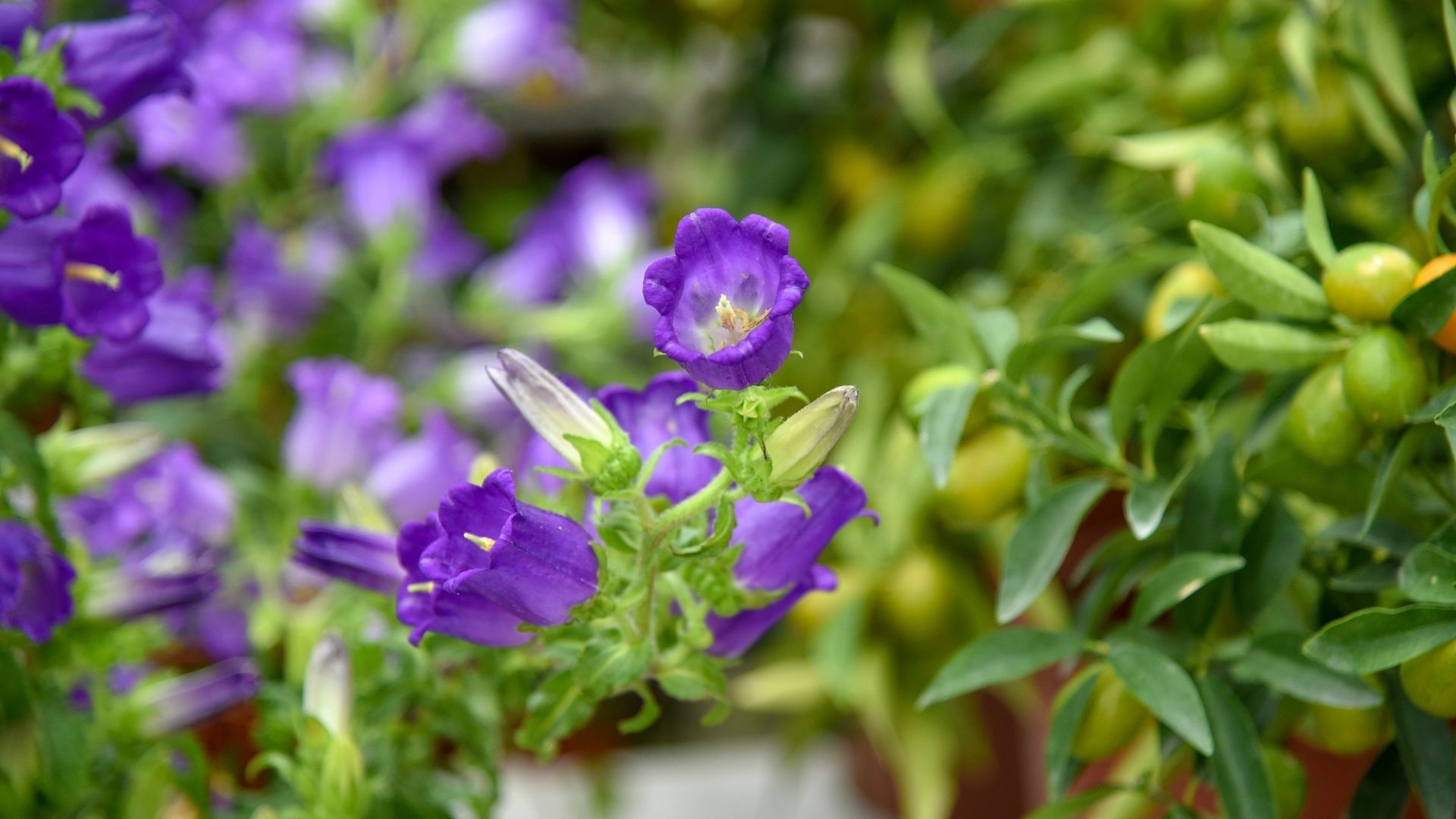
Erica Cinerea
Erica cinerea, also referred to as the bell heather, is flowering plant species that blossoms into bright purple flowers during the late spring and early fall.
Such blossoms cover a densely packed green foilage.
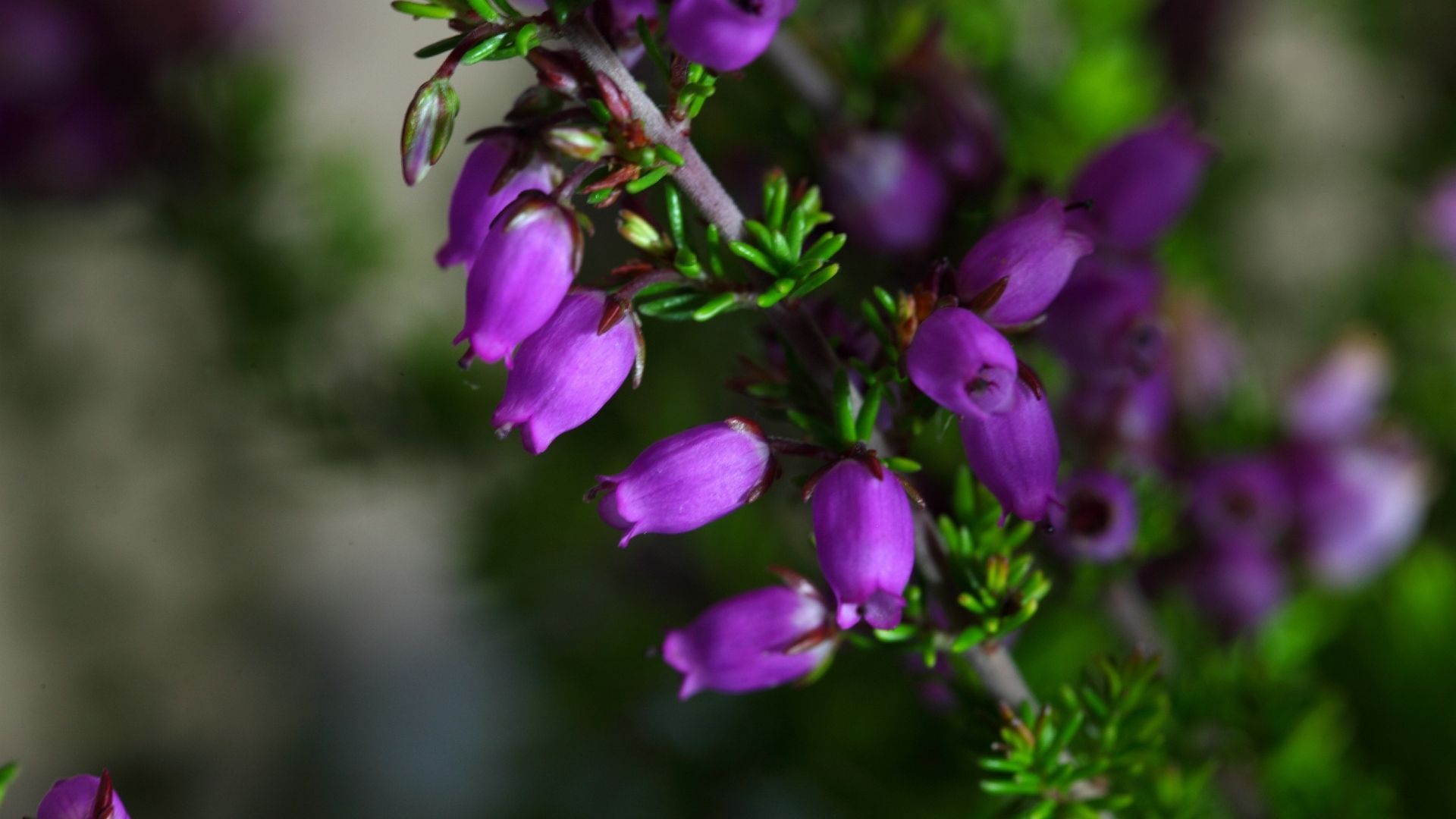
Purple is a calming, inspiring, and regal color addition to any landscape. There’s a range of purples in flowers, foliage plants, and even vegetables. Choose the purple flowers that best complement your garden and needs.
References:

